Tourcode: MCSP
- Overview
- Info & Inclusions
- Itinerary
- Map & Hotels
- Photos
- Dates & Prices
- Max Group Size 16
- Palau - boat trip through the Rock Islands. One of the crown jewels of Micronesia and a UNESCO protected region
- Samoa - Savai'i island exploration - waterfalls, caves, blowholes and rainforests
- Palau Rock Islands & Peleliu Island Excursion
- Vanuatu Yassur Volcano Excursion
- Solomon Islands - experience the diversity of the Pacific cultures
- Singles friendly (view options for single travellers)
We explore an amazing array of islands in the South Pacific, including Palau, Samoa, Guam, Vanuatu, Tonga, and the Solomon Islands (as well as time in Manila).
Showcasing the most traditional cultures and exotic tropical landscapes in Oceania, this 24-day South Pacific tour will astonish travellers with its diverse landscapes.
During this adventure we will visit remote island communities and explore tropical landscapes. From soaring volcanic peaks to remote island villages, this tour will present unique encounters with native Melanesian, Micronesian and Polynesian peoples.
Explore lush jungles, stroll beaches brushed by palm fronds, view smoking volcanoes, and visit remote shorelines as part of this South Pacific adventure.
Because many of the islands of the Western Pacific are geographically isolated, and due to their proximity to different landmasses, they are as different from one another as it is possible to be.
Though many of these islands can be visited individually, this is a rare opportunity to be able to explore this entire region. We will stop at some of the more remote islands and appreciate the differences in landscape, culture, history and nature.
Oceania is a region centered on the islands of the tropical Pacific Ocean, and this tour will explore islands in all three sub-regions of Melanesia, Micronesia, and Polynesia.
- MealsSavour authentic flavours with included daily breakfasts and dinners at hotels or handpicked local restaurants—immersing you in local cuisine without worrying about reservations or budgets.
- Transport & Logistics
Private air-conditioned coaches and included internal ferries and flights—ensuring hassle-free travel so you can focus entirely on the discoveries ahead.
"Adventures Abroad tour leader's management and guest services managed the tour with great skill and dedication. The tour leader was on top of every move and transfer. We have not experienced any issues with logistics and had a great time."
~ JULIA O"The tour leader did an excellent job coordinating some difficult travel logistics, power outage issues and resolving problems and dealing with guests who had unrealistic expectations."
~ CYNTHIA COLLINS - Expert Guidance
Unlock insider secrets at every landmark with your full-time Tour Leader and expert local guides , all gratuities covered—no hidden tipping surprises—so you immerse fully in your destination's stories, worry-free. (Except for the tips to your tour leader at the end of your tour.)
"Amazing tour guide. Our tour guide was very well organized, Her passion, knowledge, and enthusiasm completely transformed the travel experience into something truly unforgettable..."
~ MELANIE LEMAIRE"Highly recommend every trip with Adventures Abroad. It's a well organized and well thought out adventure. The tour leaders are friendly, knowledgeable and experienced professionals. Highly recommend this company."
~ SUSAN WALL - Sightseeing & EntrancesAll entrance fees for sites visited as per the itinerary—no hidden costs—so you can explore ancient ruins and excursions with complete peace of mind.
- AccommodationsUnwind in clean, well-located 3 to 4-star hotels with private en suite facilities—handpicked for comfort and convenience after each day's discoveries—so you can rest easy knowing your stay supports the real adventure, not steals the spotlight.
- Small Group
Discover the world in small groups of up to 16 travellers plus your expert Tour Leader—unlocking spontaneity, off-the-beaten-path adventures, and genuine connections at a relaxed pace, free from crowds.
"Looking Forward to My Next Adventure The best feature of the Adventures tour was the small size that allowed the group to quickly load up, let everyone get acquainted within the first 24 hours, capitalize on unplanned surprises along..."
~ PHILIP BLENSKI"Good value for a great time I have traveled with Adventures Abroad for over 20 years now. Well thought out, interesting itineraries and the other travelers congenial and friendly. The price always seems fair and overall a..."
~ Trusted Customer - Airport Transfers For Land & Air CustomersWe handle hassle-free airport transfers for all our land and air tour customers—plus early arrivals or late departures when you book extra hotel nights directly with us for added peace of mind.
- International airfare to/from the tour.
- Tour Leader gratuity, lunches, drinks, personal items (phone, laundry, etc), locally paid departure taxes, domestic and international air taxes (if applicable).
- Any optional activities not listed as part of the itinerary (ie snorkeling/scuba excursions).
- Airport transfers for Land Only customers.
- Optional trip cancellation insurance.
- Any fees associated with entry to any of the countries visited.
- Seasonality and Weather:
As this tour covers a large and diverse piece of geography, special attention has been paid to visiting all of the places covered at, or close to, the best times in terms of weather that one can typically expect. Overall, you can expect warm/hot, tropical conditions throughout. Though our intention is to avoid rainy periods, one can expect tropical showers at any time. - Transport and Travel Conditions:
Land transport is provided by private a/c coaches, the size of which will vary according to ultimate group size and location. Larger touring buses may be used in some locations such as Guam. Due to the more remote locations and limited infrastructure of most islands, we will have smaller vehicles of 16-25 seats, which may sometimes double as the local school bus, so don't expect plush touring coaches. Most inter-island flights will be operated by Air Pacific/Fiji Airways.
We have several boat excursions on this tour, which may require that you be able to step over gunwales into the boat, or sit thereon and swing your legs over. We do not include any snorkeling excursions in our written itinerary, though snorkeling opportunities may present themselves on the odd free afternoon. These will be subject to availability, tidal times, boat and life jacket availability etc. Snorkeling equipment may be available but in limited supply and of possibly dubious quality. Travellers should not expect the snorkeling opportunities to be a guaranteed or frequent presence on the tour. In our experience, the best opportunities are usually limited to Palau, Solomon Islands, Vanuatu, and Tonga. Snorkeling aside, multiple swimming opportunities exist throughout and do not present any notable challenges.
Access to these rarely visited islands is extremely difficult, and restricted by infrequent flight schedules, which can at any time. As such, itinerary modifications may occur close to the departure date or while the tour is in the field. The amount of time spent on each island will therefore be entirely dictated and determined by the available flight schedules at the time of operation of the tour. As a result, the order of islands visited may change, and the number of nights on each island may have to be adjusted -- ie we may lose one night on one island and gain a night on another, or some connection points may be replaced entirely (ie Manila or Nadi). After the trip you may have a sense that you had too much time in one place and not enough time in another. One might also observe that a lot of time is spent in airports and on planes, all necessary aspects of a trip like this. So sit back, relax, and appreciate an astonishing array of places where very few travellers ever set foot.
If we are forced to make material/content changes after your reservation, we will advise you by email. We will not, however, consider such adjustments sufficient reason for you to cancel your trip without penalty.
We rate this tour a "level 2," as, though it is not strenuous per se, this tour is ambitious, covering a huge area and involving many flights, some of which are long and possibly at inconvenient times. Some past travellers have referred to this reality as "gruelling." On the ground, activities are leisurely and not tremendously active; however, that said, the real consideration is the HEAT and humidity, which can sap your strength and cause fatigue over time.
IMPORTANT: Vegetarians/vegans and travellers with strict dietary requirements/preferences will encounter considerable challenges on this tour, as your range of non-meat/fish options will be limited. Vegetables (fresh and canned) are available only sporadically depending on the arrival of infrequent supply ships. Those with allergies and severe intolerances should reconsider participation, as these cannot be safely accommodated due to cross contamination and a lack of understanding at these destinations. As such, Adventures Abroad cannot ensure safety or accept responsibility.
A word about TOUR STATUS: While we appreciate that everyone wants to know when their chosen date for this tour will be 'guaranteed,' this tour is a special case in that our reaching minimum numbers is only one small part of the process. This tour usually sells out well in advance, but we often hold off on confirming final dates and itinerary until we have confirmed ALL arrangements at destination, including internal flights. This tour sometimes has to run in a different order, which could affect overall dates and tour start/end points. We will only confirm once such details are finalized.
PLEASE NOTE: Due to the complicated nature of our South Pacific itineraries, we regret that we are not able to offer custom/private tour services for these trips.
Am I suitable for this tour? Please refer to our self-assessment form - Activity Level: 2
These are particularly busy tours that feature a lot of moving around, sometimes by train and short journeys on local transport. Walking tours of towns and cities are leisurely but you should be prepared to be on your feet for several hours. Some of our cultural trips that occur at high altitude and/or require greater independence with baggage handling (at hotels, airports, train stations) also fall into this category.
To learn more about the Activity levels, please visit our tour styles page. - Accommodation:
Our accommodation styles and rating will vary quite widely on this tour; some hotel rooms are well-equipped and will likely include hairdryers, minibar fridge and TV. Other hotels on smaller and less developed islands will be clean and comfy, but may not provide the same amenities. All are air-conditioned. Some hotels provide complimentary purified drinking water (bring yourr own re-usable bottle). - Staff and Support:
Tour Leader throughout; local guides, drivers. - Group Size:
Maximum 14 or 16 plus Tour Leader (depending on availability and/or final rooming configurations)
- Day 1:Arrive in Apia, SamoaArrival in Apia, Samoa (airport APW).
The Pacific's morning light breaks across Samoa as we arrive in Apia, where the rhythm of fa'a Samoa—the traditional Samoan way of life—still pulses through villages unchanged for centuries. This archipelago serves as Oceania's cultural storehouse, where oval fales dot landscapes much as they did when Robert Louis Stevenson chose these islands as his final home in 1889.
Each South Pacific island group carries its own history, culture, and language, yet common threads unite them—indigenous peoples descended from epic migrations spanning millennia, traditions that evolved in isolation yet share remarkable similarities. Nowhere are these variations more evident than in the dozens of Polynesian dialects that greet visitors across this vast oceanic realm. Oceania's diverse nations harbour some of the world's most remote and culturally isolated villages, connected not by land borders but by the vast Pacific itself.
** Some itinerary modifications may occur closer to the departure date due to flight routing and schedule changes. Access to most islands is restricted by flight schedules (sometimes just 1-2 flights per week). This may, of course, impact the itinerary. The order of islands visited may change, and the number of nights on each island may have to be adjusted; ie we may lose 1 night on one island and gain a night on the other.
Overnight in Apia, Samoa.
Included Meal(s): Dinner, if required - Day 2:Samoa: Island TouringMorning mist lifts from Mulinu'u's sacred grounds as we discover why Samoa remains the Pacific's most authentic cultural experience. These burial grounds of chiefly families anchor our exploration of a nation where most inhabitants still live in traditional fales, some standing for centuries despite tin roofs replacing ancient thatch.
We trace Samoa's complex colonial story through monuments marking pivotal moments—the German flag raising site, the first Catholic missionary's landing, and the imposing Parliament House where independence was declared. At Mulivai Cathedral, European Gothic architecture marries traditional Samoan design in stunning stained glass windows that filter tropical light into kaleidoscopic patterns.
Our pilgrimage to Robert Louis Stevenson's former home reveals why the Scottish author chose this paradise for his final chapter. Now a museum, the estate preserves artifacts, books, and settings from his Samoan years, when he became known locally as "Tusitala" (teller of tales). The author who gave us Treasure Island found his own treasure in these islands, writing some of his finest works while embracing Samoan culture so completely that chiefs granted him the rare honour of burial on Mount Vaea.
From these heights, we understand why Stevenson called Samoa "the most beautiful place in the world."
Overnight in Apia, Samoa.
Included Meal(s): Breakfast, Lunch and Dinner - Day 3:Samoa: Aleipata Districts & East CoastUpolu's rugged interior unfolds as we traverse the Cross Island Road, where ancient mountains draped in emerald rainforest reveal why early Polynesian settlers chose these islands. Our scenic journey passes the distinctive Baha'i Temple before descending to the island's southern point, where traditional villages dot coastlines unchanged for generations.
At Lalamanu Beach, we feast on scrumptious BBQ and traditional umu—earth oven cooking that transforms simple ingredients into extraordinary flavours through techniques perfected over millennia. Fresh tropical fruits complement this ancient culinary art, where hot stones and banana leaves create natural ovens that infuse food with subtle, smoky essence.
Sopo'aga Falls thunders through lush vegetation as local guides demonstrate the coconut's remarkable versatility—from fresh cream making to the dozens of uses that make this "tree of life" central to Pacific island survival. At 518 metres (1,700 feet) above sea level, Le Mafa Pass provides breathtaking panoramas of east and south coastlines, where azure Pacific meets emerald mountains in dramatic beauty.
Our route winds through plantations where taro, breadfruit, and banana groves sustain families exactly as they have for centuries. In Falefa village, colourful gardens burst with hibiscus, bougainvillea, and other tropical blooms, creating perfect photo opportunities while showcasing the Samoan love of natural beauty.
Overnight in Apia.
Included Meal(s): Breakfast and Dinner - Day 4:Samoa: Savai'i Island TouringDawn's early ferry carries us across sapphire channels to Savai'i, Samoa's largest island and keeper of its most authentic traditions. This massive volcanic shield remains one of Polynesia's least populated islands, where traditional villages with oval-shaped houses nestle beside freshwater bathing pools fed by underground springs—a landscape many consider the "real" Samoa.
Our 90-minute crossing from Mulifanua wharf offers spectacular views of the Samoan archipelago, volcanic peaks rising from azure waters like sleeping giants. Upon arrival, Savai'i's slower pace immediately captivates—here, time moves to ancient rhythms rather than modern schedules.
At the island's fresh produce market, we witness centuries-old trading traditions where locally grown taro, breadfruit, and handwoven handicrafts change hands through relationships rather than mere transactions. The air fills with the sweet scent of ripening bananas and the melodic cadence of Samoan voices sharing news, gossip, and laughter.
Savai'i's volcanic origins remain visible everywhere—lava fields that stopped just short of villages, natural pools carved by ancient eruptions, and fertile soils that have sustained generations of families. This is where Polynesian culture exists in its purest form, largely unchanged since the first Austronesian seafarers arrived over 3,000 years ago.
Overnight in Apia, Samoa.
Included Meal(s): Breakfast, Lunch and Dinner - Day 5:Samoa: Manono Island TouringA turquoise jewel appears as our boat approaches Manono Island, where time stopped in 1995—not metaphorically, but literally when electricity first arrived. This three-square-kilometre paradise, completely enclosed by coral reef, once held such political importance that Samoa's highest chiefs made it their home.
Our journey begins with an hour's drive west to Cape Lefatu, where we glimpse the volcanic crater island of Apolima before our 20-minute boat ride to Manono. Samoan hosts greet us with genuine warmth, sharing customs and coconut lore passed down through generations. Here, among just four villages housing 889 souls, we discover a world without noise, dogs, or vehicles—only a coastal footpath connecting communities where men still fish from traditional canoes each dawn.
Walking this paradise, cooling trade winds carry the fragrance of frangipani and tiare flowers through lush gardens where families cultivate life exactly as their ancestors did. The crystal-clear lagoon displays every shade of blue imaginable, from pale aquamarine shallows to deep sapphire depths where coral gardens thrive.
This represents adventure travel at its purest—friendly people, unchanged traditions, and an island virtually untouched by the last century. Life flows to natural rhythms: men paddle to coral reefs at sunrise, returning only when they've caught enough fish to feed their families, embodying a sustainable lifestyle the modern world has largely forgotten.
Overnight in Apia.
Included Meal(s): Breakfast and Lunch - Day 6:Apia, Samoa - Fly to Nuku'alofa, Tonga (Via Fiji)Leisurely morning hours in Apia provide final glimpses of Samoan life before we journey to another Pacific realm entirely. Our afternoon flight carries us via Nadi, Fiji—a crucial connection point that ties together this complex island-hopping adventure through Oceania's most remote destinations.
If you're wondering why we don't spend more time in Fiji, we've found that time there wasn't considered a highlight by past travellers. The 'thrust' of this tour focuses on the more unknown, obscure islands rather than established tourist destinations, which is why we don't emphasize Fiji despite its importance as our connection hub.
As we soar above endless Pacific waters, the scale of Oceania becomes apparent—hundreds of thousands of square kilometres where scattered atolls and volcanic peaks represent the world's most dispersed nations. Each island group developed unique cultures during millennia of isolation, creating the remarkable diversity we're experiencing.
Tonight we enter the Kingdom of Tonga, one of the Pacific's most traditional societies and one of the world's few remaining absolute monarchies. Here, ancient Polynesian customs blend with royal protocol dating back over 1,000 years, creating a cultural experience unlike anywhere else on earth. The flight path traces ancient migration routes followed by Polynesian navigators who used stars, currents, and bird behaviour to find these specks of land in the vast Pacific—a seafaring achievement that ranks among humanity's greatest exploration accomplishments.
Overnight in Nuku'alofa.
Included Meal(s): Breakfast and Lunch - Day 7:Tonga TouringRoyal drums echo across Nuku'alofa, where Captain James Cook coined the name "Friendly Islands" after his warm 1773 reception. This sovereign archipelago of 176 islands—52 inhabited—remains one of the world's last absolute monarchies, where social order follows feudal traditions and the king distributes land and positions without democratic oversight.
At the 'Ancient Tonga' village in Fangaloto, master craftsmen reveal coconut mythology and traditional methods for extracting the precious milk that sustains island life. We witness the ancient art of earth oven cooking, where volcanic stones heated over hardwood fires transform simple ingredients into feast-worthy dishes through techniques unchanged for centuries.
The rhythmic pounding of tapa cloth making provides our soundtrack as women demonstrate how mulberry bark becomes the finest textiles in Polynesia. Mat weaving and wood carving exhibitions showcase skills passed from generation to generation, each pattern and technique carrying cultural significance beyond mere decoration.
Local markets burst with tropical abundance—giant taro roots, sweet kumala, breadfruit, and fish so fresh they were swimming at dawn. The traditional "umu" lunch includes multiple courses prepared in earth ovens, where banana leaves impart subtle flavours while maintaining the food's natural essence.
Song and dance performances celebrate Tongan heritage through movements that tell stories of voyaging ancestors, royal genealogies, and island legends passed down through oral tradition for over a millennium.
Overnight in Nuku'alofa.
Overnight in Nuku'alofa.
Included Meal(s): Breakfast, Lunch and Dinner - Day 8:Tonga: Tongatapu Island TouringTongatapu unfolds its treasures as we explore the main island housing two-thirds of Tonga's population, where royal traditions and ancient mysteries create an unforgettable cultural tapestry. In Nuku'alofa, towering Norfolk pines frame the Royal Palace overlooking Pangai field, where royal feasts, kava ceremonies, and parades maintain customs dating back centuries.
The Royal Tombs provide solemn reminders of Tonga's unbroken monarchy—King George I, King George II, Queen Salote, and King Taufa'hau Tupou IV rest at the field's centre, their graves marking nearly two centuries of Pacific royalty. Each monument tells stories of leaders who navigated their kingdom through colonial pressures while maintaining independence.
At Mu'a village, Captain Cook's Landing Place monument marks where the great British explorer met the reigning Tu'i Tonga in 1777, resting under a massive banyan tree that still shades visitors today. This encounter between European and Polynesian cultures began centuries of interaction that shaped modern Tonga.
The Ha'amonga Trilithon—Tonga's Stonehenge—dominates the eastern landscape with massive coral limestone blocks assembled in 1200 AD by the eleventh Tongan King. Recent scientific interpretation suggests this monument functioned as an ancient sundial, tracking seasonal changes crucial for agricultural and ceremonial cycles. Nearby, the Maka Fa'akinanga stone bears mysterious markings resembling a human form, where oral traditions claim kings once sat while maintaining safe distances from potential assassins.
At some point during our time in Tonga, we hope to visit Anahulu Caves. We'll spend about a half-hour in an illuminated cave (with a low-headroom entry) which opens up to amazing stalactites and stalagmites and a beautiful cave pool.
Overnight in Nuku'alofa.
Included Meal(s): Breakfast and Lunch - Day 9:Tonga: Fly to Port Vila, Vanuatu (Via Fiji)Early morning departure carries us from Tonga's royal traditions to Vanuatu's incredible cultural diversity—a nation of 221,000 people speaking 113 distinct languages, making it one of Earth's most culturally diverse countries per capita. This linguistic treasure trove resulted from thousands of years of sporadic immigration from various Pacific regions.
Natural boundaries—vast ocean stretches, dense jungle, and mountainous terrain—isolated many groups even from the same ethnic origins, creating not just warfare but sophisticated, distinctly different societies and political systems. Over millennia, these isolated communities developed unique traditions while maintaining common Melanesian threads that unite the archipelago.
The geographic isolation that created this diversity now makes Vanuatu fascinating for visitors seeking authentic cultural encounters. Villages separated by mere kilometres may speak completely different languages and practice distinct customs, yet share fundamental beliefs about community, spirituality, and connection to the land.
During our stay, we'll explore the excellent National Museum, where artifacts and exhibitions trace the complex cultural evolution that created modern Vanuatu. From ancient Lapita pottery shards to colonial artifacts and contemporary art, the museum illustrates how isolation bred creativity and cultural innovation.
Tonight we rest in Port Vila, preparing for adventures that will take us from active volcanoes to traditional villages where stone-age technologies still serve daily life—a reminder that progress takes many forms across the Pacific's scattered islands..
Overnight in Port Vila.
Included Meal(s): Breakfast and Dinner - Day 10:Vanuatu: Tanna Island / Yassur Volcano ExcursionThe earth's heartbeat becomes audible as we approach Yasur Volcano, one of the world's most accessible active volcanoes and a sacred site where local tribes believe their ancestors' spirits reside. Our scenic one-hour flight to Tanna Island reveals spectacular aerial views of Port Vila Harbour, South Efate, and Erromango's pristine coastline, weather permitting.
White Grass Airport's approach provides stunning perspectives of Tanna's dramatic landscape—ancient volcanic formations, lush tropical forests, and ash plains that speak of the island's violent geological history. Friendly 4WD Safari staff transport us across the island, passing traditional villages where life continues much as it has for centuries despite the rumbling giant nearby.
The journey traverses diverse ecosystems—dense native bush gives way to volcanic ash plains as we approach Yasur, locally known as 'Old Man' in recognition of its ancient power. At 361 metres above sea level, this geological marvel features a crater 300 metres wide and 100 metres deep, constantly active for over 800 years according to local oral histories.
A short 10-minute uphill walk brings us to the crater rim, where we witness nature's raw power as molten lava fountains erupt with thunderous roars every few minutes. This 'once in a lifetime' experience puts visitors face-to-face with the creative forces that built the Pacific's volcanic islands, a humbling reminder of our planet's dynamic nature.
Tanna Island represents a natural paradise beloved by volcanologists and adventure travellers seeking authentic encounters with both geological wonders and traditional Melanesian culture.
Overnight on Tanna.
Included Meal(s): Breakfast, Lunch and Dinner - Day 11:Tanna Island Touring - Fly to Port VilaThis morning we explore western Tanna Island, visiting the coffee hulling plant where organic beans grow in volcanic soil enriched by centuries of eruptions, with traditional processing methods creating distinctive flavours. Lenakel Markets burst with handwoven baskets, carved wooden artifacts, and tropical produce, serving as the community's social hub where news, gossip, and trade create connections that bind island society together.
The famous Giant Banyan Tree—claimed as the largest on record—dominates a sacred grove where traditional ceremonies still occur. This magnificent specimen represents the interconnectedness of life that defines Melanesian worldview, serving as community meeting places and sources of traditional medicine.
This afternoon we fly to Port Vila and enjoy comprehensive touring including Parliament House, Council of Chiefs, Erakor wharf, Independence Park, and market houses.
Port Vila's vibrant character reflects Vanuatu's unique history as the New Hebrides, jointly administered by Britain and France in a colonial arrangement so bizarre it created two of everything—currencies, police forces, legal systems, and schools. Parliament House and the Council of Chiefs building symbolize Vanuatu's unique governance system blending Westminster democracy with traditional Melanesian leadership structures.
At Independence Park we commemorate 1980 liberation from joint colonial rule, while the bustling market houses showcase cultural fusion where traditional woven bags sit beside French pastries. The chocolate factory and 83 island distillery represent contemporary enterprises building on traditional ingredients, creating distinctive products that capture Vanuatu's diverse botanical heritage.
Overnight in Port Vila.
Included Meal(s): Breakfast and Dinner - Day 12:Vanuatu: Round Island Tour - Fly to Nadi, FijiOur comprehensive round island tour begins at Pepeyo Cultural Village, where ancient traditions come alive through master practitioners who demonstrate skills that sustained Melanesian cultures for millennia. Here we witness mesmerizing custom dancing performances that tell stories passed down through generations, followed by an amazing fire-walking display that showcases the profound spiritual connections between people and the volcanic landscapes that define Vanuatu's cultural identity.
We continue with a brief stop at the Pangpang Trees along the main road, where massive ancient banyan trees reveal fascinating botanical secrets. Our guides explain the difference between male and female specimens while sharing traditional knowledge of how these giants became central to village life—serving as meeting places and providing essential resources including fiber, medicine, and construction materials that communities have relied upon for centuries.
At Emua Wharf, we pause for a short walk and informative talk about the surrounding islands, gaining perspective on how geography shaped settlement patterns and cultural development across this remarkable archipelago. Our journey through history continues at the WW2 Museum, where World War II artifacts and scattered relics remind visitors how global conflicts reached even the most remote Pacific islands, forever changing the trajectory of local communities.
Lunch at Survivor Beach and Gideon's Landing provides a perfect midday break, where our buffet lunch features traditional preparations using ingredients and techniques passed down through generations. Each dish tells stories of adaptation and cultural evolution, showcasing how Pacific island communities have maintained their culinary heritage while embracing new influences. At Gideon's Landing and Vanuatu Survivor Beach, we reflect on how external events shaped local communities while enjoying afternoon coffee and tea in settings that blend historical significance with natural beauty.
Our refreshments include local organic fruits in season and fresh juices that showcase the incredible biodiversity thriving in volcanic soils, each taste reflecting the unique terroir that makes Vanuatu's produce so distinctive.
This comprehensive tour illustrates how geography, culture, and history interweave across the Pacific, creating unique destinations where ancient wisdom meets modern understanding. From spiritual fire-walking ceremonies to wartime artifacts, from giant banyans to pristine beaches, the day reveals the complex layers of experience that make Vanuatu one of the Pacific's most fascinating destinations.
In the evening, we fly to Nadi for our overnight stay. While we have no organized touring in Nadi, you may want to explore the famous Sri Siva Subramaniya Swami Hindu Temple, conveniently located close to the hotel and airport area, offering an opportunity to experience Fiji's diverse cultural heritage.
Overnight in Nadi.
Included Meal(s): Breakfast, Lunch and Dinner - Day 13:Nadi, Fiji - Fly to Solomon IslandsOur journey across the Pacific traces ancient migration routes as we travel from Fiji to the Solomon Islands, where Melanesian cultures developed distinct characteristics during millennia of isolation in one of the Pacific's most remote archipelagos. The flight path follows routes once navigated by Polynesian seafarers who used stars, currents, and bird behaviour to find these specks of land in the vast Pacific.
Upon arrival at Honiara's Henderson International Airport, we receive our meet and greet transfer to the hotel, beginning our introduction to a nation where over 900 volcanic islands comprise one of the world's few remaining unspoiled destinations. Here, rainforests and active volcanoes create landscapes virtually unchanged since geological formation, while traditional villages dot coastlines and highlands where Solomon Islanders maintain customs their ancestors established centuries ago.
This evening we gather for the Solomon Kitano Mendana Hotel buffet dinner featuring traditional Solomon Islands cuisine and cultural entertainment that showcases authentic Melanesian heritage. Local performers demonstrate custom dancing, traditional music, and storytelling that has preserved island legends for generations, providing our first immersive encounter with cultures that developed in remarkable isolation.
Overnight in Honiara.
Included Meal(s): Breakfast and Dinner - Day 14:Solomon Islands: Culture and WW2 TourOur scenic and historical tour begins at 8:30 AM with a visit to Henderson Field and Memorial Garden, where we'll explore one of the Pacific War's most strategically important airfields. The memorial garden provides a peaceful setting to reflect on the fierce battles that determined control of this crucial aviation hub.
We then journey to Hotomai Cultural Village for an immersive cultural tour experience with the Bira tribe of Guadalcanal. This authentic encounter allows us to witness traditional customs and lifestyles that Solomon Islanders have maintained for centuries, offering genuine cultural exchanges that few tourists ever experience.
Our historical exploration continues at the Ikichi Memorial, followed by a stop at Cosy Cove Café in Henderson for lunch (own expense or tour inclusive option available). The afternoon takes us through the haunting Pagoda Tunnel, where we'll discover underground shelters carved during wartime, before ascending to Bloody Ridge—site of one of Guadalcanal's most decisive battles.
At Mt Austin Japanese Memorial, we'll pay respects to all who fought in these remote Pacific locations, while the Betikama Museum provides comprehensive context for understanding how global conflicts reached even the most isolated corners of the world.
Stepping beyond typical tourist experiences, we enter one of the world's few remaining unspoiled destinations where rainforests and active volcanoes create landscapes virtually unchanged since geological formation. Over 900 volcanic islands comprise the Solomons, where palms, ferns, and exotic orchids thrive in ecosystems supporting incredible biodiversity.
Guadalcanal's dark history as a World War II battleground contrasts sharply with its natural beauty, creating sobering reminders of how global conflicts reached even the most remote Pacific locations. Multiple WWII sites scattered across the island tell stories of fierce fighting between Japanese and Allied forces, where jungle warfare and tropical diseases proved as deadly as enemy fire.
Dense rainforests harbour endemic species found nowhere else on Earth, while volcanic activity continues shaping landscapes through ongoing geological processes. Traditional villages dot coastlines and highlands where Solomon Islanders maintain customs and lifestyles their ancestors established centuries ago, creating opportunities for cultural exchanges that few tourists ever experience.
This represents adventure travel at its purest—pristine environments, authentic cultures, and historical significance combined in destinations that challenge and reward visitors seeking genuine exploration beyond conventional tourism boundaries.
Overnight in Honiara.
Included Meal(s): Breakfast and Dinner - Day 15:Solomon Islands: City Tour & Amazing Grace Cocoa TourOur West Guadalcanal half-day WWII historical and sightseeing tour begins in Honiara's vibrant central market, where traditional foods and handicrafts showcase the blend of contemporary life with Melanesian culture. From there, we proceed to the US War Memorial, which commands magnificent views across Iron Bottom Sound—named for numerous warships resting on the sea floor.
We'll visit the National Parliament building and National Museum Art Gallery, where our orientation tour reveals how this small capital balances rapid modernization with traditional culture. Contemporary government buildings stand alongside markets selling traditional goods, while local guides share stories of how families survived wartime occupation and how post-independence development has transformed Solomon Islands society.
Lunch at Omis Kitchen Art Gallery (own expense) provides an opportunity to experience local cuisine in an artistic setting, before we journey to Amazing Grace Cocoa Farm for our comprehensive farm tour.
Honiara's strategic position overlooking Iron Bottom Sound provides our introduction to a capital city where WWII history permeates daily life. The US Peace War Memorial, constructed for the 50th anniversary of the Battle of Guadalcanal, offers understanding of why control of these islands became so vital to both Japanese and Allied strategies. The mountainous terrain that surrounds Honiara offered defensive positions while the deep-water harbour provided crucial anchorage for naval operations that ultimately determined the Pacific War's outcome.
At Amazing Grace Cocoa Farm, we discover how traditional agricultural knowledge adapts to contemporary markets. The comprehensive farm tour reveals chocolate-making processes that blend ancient cultivation techniques with modern processing, showcasing how Pacific island communities balance tradition with economic opportunity in an increasingly connected world.
Honiara's Botanical Garden showcases the incredible plant diversity that makes the Solomon Islands a botanist's paradise, where endemic species evolved during millions of years of isolation.
Overnight in Honiara.
Included Meal(s): Breakfast and Dinner - Day 16:Solomon Islands: West GuadalcanalOur exploration of western Guadalcanal begins at the Vouza Memorial, which honours Jacob Vouza, a Solomon Islands police sergeant who endured brutal torture rather than reveal Allied positions to Japanese interrogators. His extraordinary courage exemplifies how Pacific islanders contributed to Allied victory despite becoming unwilling participants in global conflict.
We continue to the Vilu Outdoor Museum, an open-air collection of wartime artifacts that provides tangible connections to the battles fought across these islands. Lunch at B17 Dive Bungalows (own expense) offers respite in a unique setting before we head to the pristine Bonge Beach.
The afternoon's highlight takes us to Bonege Beach for snorkeling around the Kinugawa Maru, a Japanese vessel that now serves as an underwater memorial and artificial reef. This experience combines historical reflection with the natural beauty of Solomon Islands' marine environment, where coral growth has transformed wartime wreckage into thriving ecosystems.
The afternoon's exploration focuses on western Guadalcanal, where these sites collectively tell the story of how global conflict transformed remote Pacific communities. The day's experiences showcase the resilience of both human communities and natural environments in recovery and renewal.
This day's description serves as a guide only, as our Tour Leader and local guides will tailor experiences based on conditions and variables that make each Solomon Islands visit unique. This flexibility ensures authentic encounters with communities and environments that remain largely untouched by mass tourism.
Overnight in Honiara.
Included Meal(s): Breakfast and Dinner - Day 17:Honiara, Solomon Islands - Fly to ManilaOur journey across the Pacific traces ancient migration routes as we travel from Melanesian Solomon Islands to the Philippines, where Austronesian-speaking peoples began their epic dispersal across the Pacific thousands of years ago. The connection through Port Moresby (transit only) reminds us how geographic proximity created cultural connections despite vast ocean distances.
Manila awaits as the former "Pearl of the Orient," where Spanish galleons connected Asia with the Americas in history's first truly global trade network. Located on Manila Bay's eastern shores, this strategic position made Manila the jewel of Spain's Pacific Empire during the 16th century, when silver from Mexico and Peru financed trade in Chinese silk, porcelain, and spices.
This evening's arrival launches our exploration of Southeast Asian cultures that provided the ancestral foundation for Polynesian and Melanesian societies we've been experiencing. Manila represents the western terminus of Pacific cultural exchanges that began with prehistoric migrations and continued through colonial trade networks that connected Pacific islands with Asian civilizations.
PLEASE NOTE that the order/placement of our Manila sightseeing elements may vary depending on arrival/departure flight times.
Overnight in Manila.
Included Meal(s): Breakfast - Day 18:Manila: Chinatown & the Charms of Old ManilaBinondo's aromatic streets transport us into the world's oldest Chinatown, where Chinese traders established communities four centuries ago to serve Spain's galleon trade connecting Asia with the Americas. Our walking exploration reveals culinary traditions where local must-eat delicacies blend Chinese techniques with Filipino ingredients, creating unique fusion flavours found nowhere else.
The Chinese Cemetery showcases elaborate mausoleums reflecting the community's prosperity and cultural preservation, where Christian, Buddhist, and Taoist burials illustrate the religious diversity that characterizes overseas Chinese communities. Nearby, the Minor Basilica of the Black Nazarene (Quiapo Church) draws millions of devotees to the most venerated religious icon in the Philippines.
Roxas Boulevard carries us to Rizal Park, named for Dr. Jose Rizal, whose execution by Spanish authorities in 1896 sparked the Philippine Revolution. This vast green space serves as Manila's social heart, where locals jog, picnic, and gather in scenes that reveal contemporary Filipino life beyond tourist attractions.
Intramuros—meaning "within the walls"—preserves remnants of Spanish Manila, where Miguel Lopez de Legazpi built fortifications on a ruined Islamic settlement site. The 4-kilometre (3-mile) walls, up to 13 metres thick, protected Spanish colonial society that included 15 churches and 6 monasteries within this exclusive European enclave.
Fort Santiago guarded Manila Bay's entrance through centuries of conflict, serving as military headquarters, prison, and execution site during various periods of foreign occupation. The fortress walls tell stories of resistance, tragedy, and cultural transformation that shaped modern Philippines.
Overnight in Manila.
Included Meal(s): Breakfast and Dinner - Day 19:Manila: Chinatown/ New Manila Tour / Fly to PalauMakati's gleaming towers represent modern Philippines' economic emergence, while the American Cemetery and Memorial honours the 17,206 American servicemen killed in Pacific operations during World War II. The beautifully maintained grounds provide breathtaking views across Manila while commemorating sacrifices that liberated the Philippines from Japanese occupation.
Ayala Museum showcases works by Fernando Zobel and other prominent Filipino artists, illustrating how colonial encounters influenced contemporary culture and artistic expression. The collection traces artistic evolution from traditional indigenous forms through Spanish, American, and modern influences that created distinctly Filipino artistic traditions.
Casa Manila (if not visiting on Sunday) reproduces a 19th-century Spanish colonial house equipped with oriental and European décor alongside Philippine antique furniture. Built by Imelda Marcos, this restoration project displays stunning antique furniture and artwork that illustrate the cultural fusion characterizing Spanish colonial society in the Philippines. The exhibits reveal how Chinese, European, and indigenous Filipino influences created unique decorative arts and architectural styles that influenced cultural development throughout Spanish territories in the Pacific, including Guam and the Northern Marianas we'll visit later.
Tonight's late flight carries us back into Micronesia, where small island nations developed distinct cultures despite sharing common ancestral roots with Philippine populations. Palau awaits with some of the Pacific's most pristine marine environments and archaeological mysteries that continue puzzling researchers studying Pacific prehistory.
Overnight in Koror.
Included Meal(s): Breakfast and Dinner - Day 20:Palau: Island TouringThe Palau Islands are an archipelago composed of about 350 islands and atolls having an area of approximately 160 square miles. All of the islands except two small atolls to the north and the islands of Angaur and Peleliu to the southwest are enclosed within the barrier or fringing reef. These islands are located at a crossroads where the Pacific Ocean meets the Philippine Sea, creating one of the worlds' richest zones of tropical marine bio-diversity. This island group is home to one of the highest number of species not found anywhere else in the world. The main island of Babeldaob is the second largest landmass in Micronesia (after Guam) and is recognized as one of the largest undisturbed tropical rainforests in Micronesia.
We will spend today exploring the island of Babeldaob, Palau's largest island, and often called the "Big Island". This is a truly mysterious place that appears physically impenetrable for the most part and shields enigmatic monoliths whose origin and purpose is unknown. The east coast has beautiful stretches of sandy beach, while the west coast has a largely mangrove-studded shoreline. Ancient stone footpaths connect many villages, there are no traffic lights, and resort hotels are a world away.
Archaeological highlights include the Stone Faces (Badrulchau) of Ngerchelong, the ancient Stone Monoliths, and the mysterious terraced hillsides found in various locations around Babeldaob. We will also visit a traditional Bai (Men's meeting house). In the past each village had a Bai built on top of a raised stone platform. These houses were constructed from giant timbers reinforced with coconut fiber ropes, and assembled without nails in a timber frame design. Women were only allowed to visit the Bai ra Cheldebechel. Today we see one of the few remaining bais in Palau, which offers us a unique look at authentic Palau'an culture.
At some point during our time in Palau, we'll visit the Belau National Museum, the oldest museum in Micronesia. The indoor and outdoor exhibits detail Palau's history, and include information about the past possessors of the territory such as Germany, Japan, Spain and the USA. In the museum we will see exhibits from all eras of Palauan life, including artworks, photography, sculpture, storyboards and more, all tracing the history of the colonial occupation on the island.
Overnight in Koror.
Included Meal(s): Breakfast and Dinner - Day 21:Palau: UNESCO Protected Rock Islands & Peleliu Island ExcursionToday we will enjoy a scenic boat trip and excursion to the historic island of Peleliu.
The Rock Island Lagoon unfolds like a surreal dreamscape as our boat winds through over 400 uninhabited limestone islands, their distinctive "mushroom" shapes rising from turquoise waters in formations that inspired UNESCO World Heritage designation. These volcanic-origin islands display aesthetic beauty heightened by complex reef systems featuring over 385 coral species and diverse marine habitats. This marine wonderland harbours the world's highest concentration of marine lakes—isolated seawater bodies separated from the ocean by land barriers, creating unique ecosystems where evolution proceeded independently for thousands of years.
Peleliu Island represents a different kind of wonder—a place where "the irresistible force of the sea meets the immovable mass of the reef," creating spectacular underwater walls teeming with countless fish species. However, Peleliu's natural beauty cannot overshadow its tragic World War II history, when this strategic island became a brutal battleground.
Japanese forces constructed elaborate underground tunnel systems and fortifications defended by tens of thousands of troops. The resulting battle cost nearly 11,000 Japanese and 1,000 American lives, making Peleliu one of the Pacific War's costliest engagements relative to the island's size.
Our comprehensive tour covers important natural sites alongside WWII remnants and the local War Memorial Museum, where exhibits illustrate how global conflict transformed peaceful Pacific communities. The juxtaposition of pristine coral reefs with rusted military equipment provides sobering reminders of war's impact on paradise.
Overnight in Koror.
Included Meal(s): Breakfast, Lunch and Dinner - Day 22:Palau - Fly to Tumon, Guam USAOur early morning flight carries us to Guam, Micronesia's largest island and the southernmost in the Mariana archipelago, where 4,000 years of cultural evolution created the unique Chamorro civilization. This vibrant tropical paradise balances pristine beaches with a fascinating melting pot of Asian, European, Pacific Rim, and American influences.
Guam's strategic Pacific location made it a coveted prize throughout history—Ferdinand Magellan sighted these islands in 1521 during his circumnavigation attempt, Spain claimed them in 1565, and Spanish colonization began in 1668 when the islands provided perfect resting places for galleon traders crossing the Pacific.
After a leisurely morning, we commence sightseeing in the central region, beginning at South Pacific Memorial Park, a former main battlefield during the Pacific War. In Hagatna, Guam's scenic capital, 333 years of Spanish rule left numerous historic buildings that survived devastating WWII battles and modern development pressures.
Fort Apugan (locally known as Fort Santa Agueda) provides the only unobstructed views of north-central Guam and surrounding waters, serving as the sole survivor of Spanish-era fortifications in Hagatna. At Latte Stone Park, mysterious stone pillars believed to support ancient Chamorro houses dating to 500 AD reveal sophisticated prehistoric architecture.
The new Guam Museum, opened in 2016, features interactive technology and the most complete display of Guam's history and culture in the Chamorro language. Over 300 curated artifacts, thousands of images, multiple audio recordings, and short films guide visitors through seven galleries exploring the historical Chamorro narrative of Guam.
Overnight in Tumon.
Included Meal(s): Breakfast and Dinner - Day 23:Guam: Island TouringSouthern Guam's picturesque rural regions remain largely untouched and undeveloped, offering glimpses of traditional island life that survived centuries of foreign influence. This journey through Guam's most authentic landscapes reveals how geography and culture interweave across the Pacific's inhabited islands.
Orote Point overlooks Apra Harbour at the site of the Mariana Islands' first recorded human settlement, where archaeologists calculate that people used this strategic location for subsistence living over 3,500 years ago. In 1944, this same point witnessed American liberation forces ending Japanese occupation and restoring Guam to United States control.
Fort Soledad (Nuestra Senora de la Soledad), perched on Umatac's southern tip, represents one of the last fortifications built by Spanish authorities to support 19th-century galleon trade. These massive stone walls protected treasure ships carrying Asian goods to Mexico and returning with American silver that financed Spain's global empire.
Panoramic views encompass grassy hills, deep jungle ravines, and kilometres of pristine coastline comprising the Territorial Seashore Park, where traditional Chamorro culture coexisted with successive colonial administrations. Pago Bay, once home to Spanish settlements, remains one of Guam's most picturesque bays, where coral reefs create natural harbours that sustained communities for millennia.
Our farewell dinner celebrates the incredible cultural diversity we've experienced across the Pacific—from Samoa's fa'a Samoa traditions to Tonga's royal protocols, Vanuatu's linguistic diversity, Solomon Islands' untouched villages, Palau's ancient mysteries, and Guam's multicultural fusion that represents modern Micronesia.
Overnight in Tumon.
Included Meal(s): Breakfast and Dinner - Day 24:DepartureOur South Pacific odyssey concludes as we prepare for departure from Tumon, Guam, carrying memories of authentic cultural encounters and pristine natural environments that few travellers ever experience. From Samoa's traditional fales to Guam's modern museums, we've witnessed how Pacific island societies balance ancient wisdom with contemporary challenges.
This journey through Oceania's most remote destinations revealed common threads connecting scattered cultures—Polynesian navigation skills that populated vast ocean regions, Melanesian traditions that sustained isolated communities, and Micronesian adaptations that created unique island civilizations. Each destination showcased how geography shapes culture while demonstrating the remarkable resilience of Pacific island peoples.
Departure from Tumon, Guam (airport GUM).
BON VOYAGE!
Included Meal(s): Breakfast
Countries Visited: Fiji, Guam, Palau, Philippines, Samoa, Solomon Islands, Tonga and Vanuatu
*The red tour trail on the map does not represent the actual travel path.
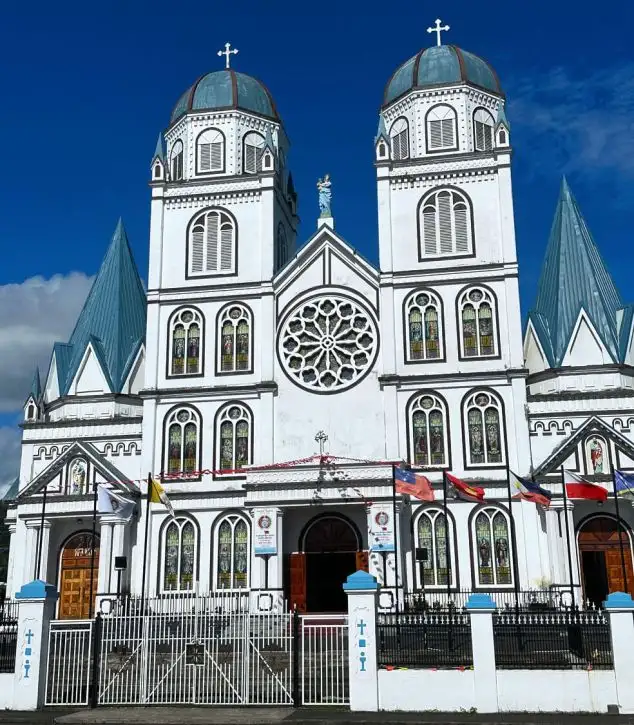
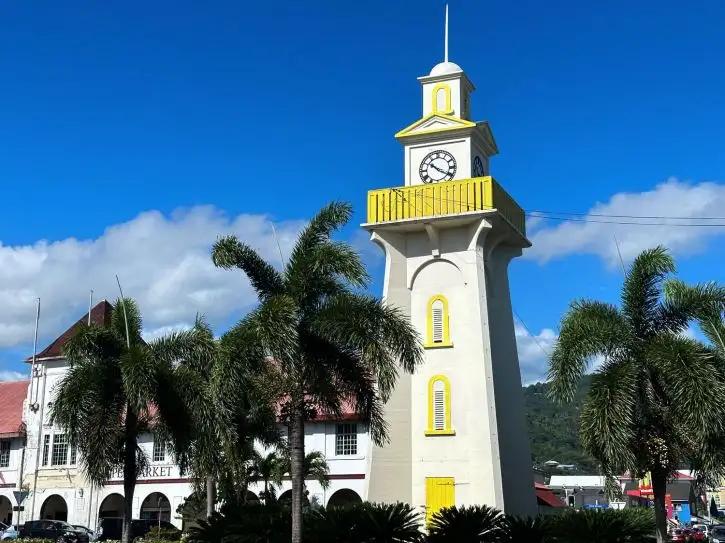
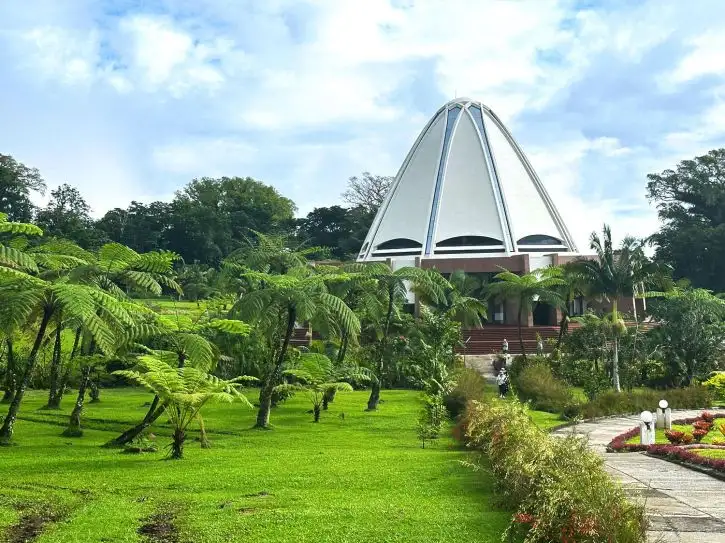
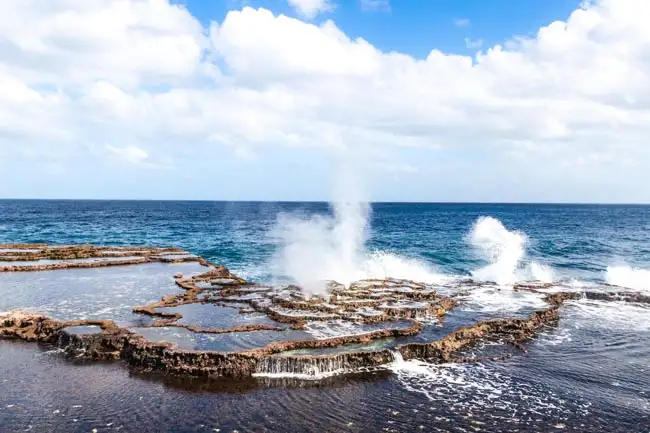
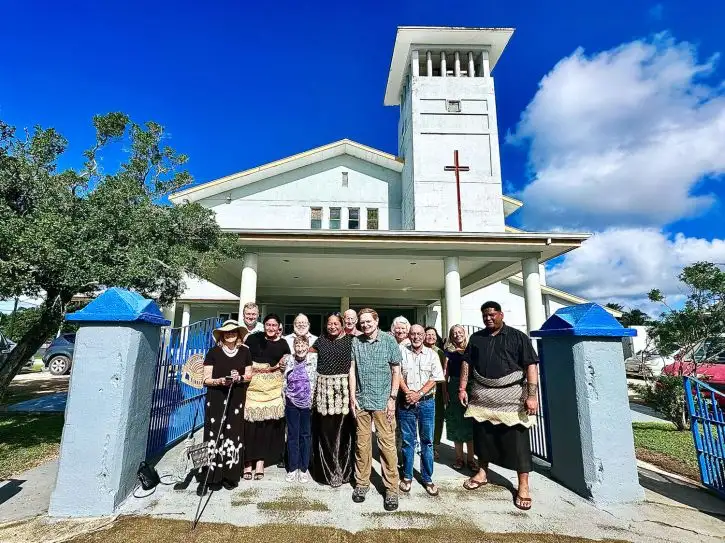
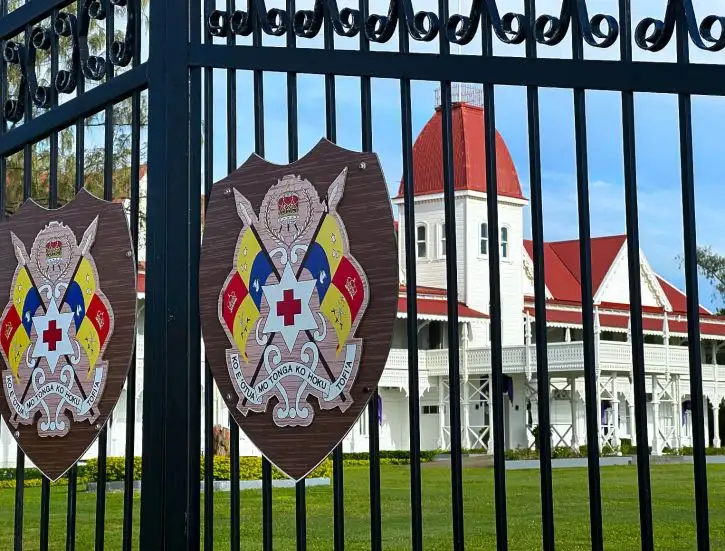
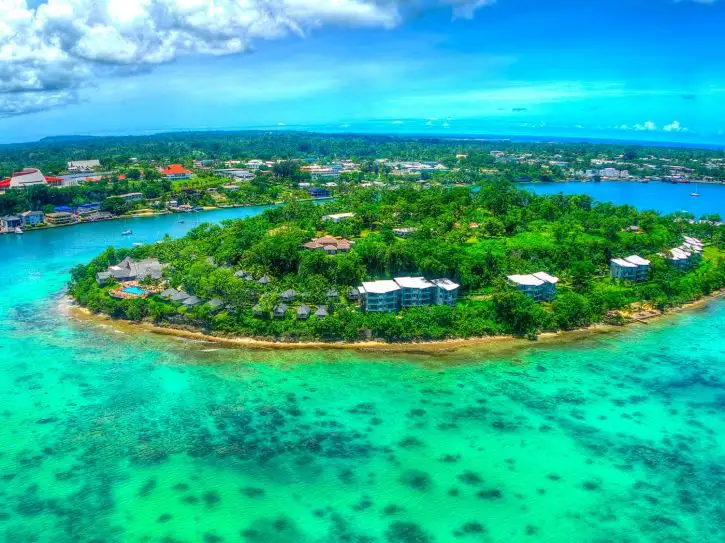
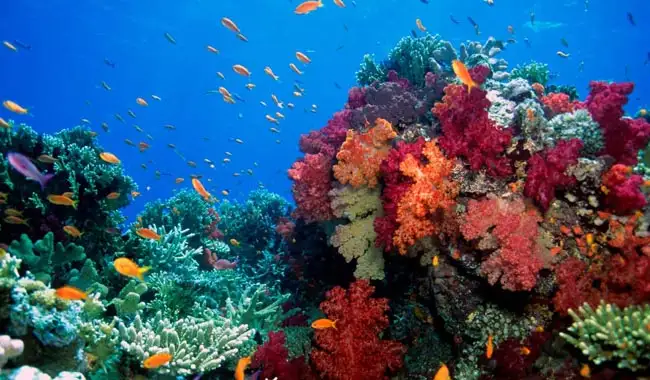
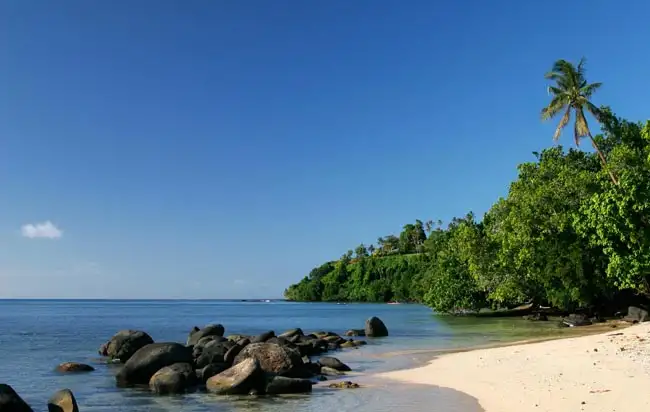
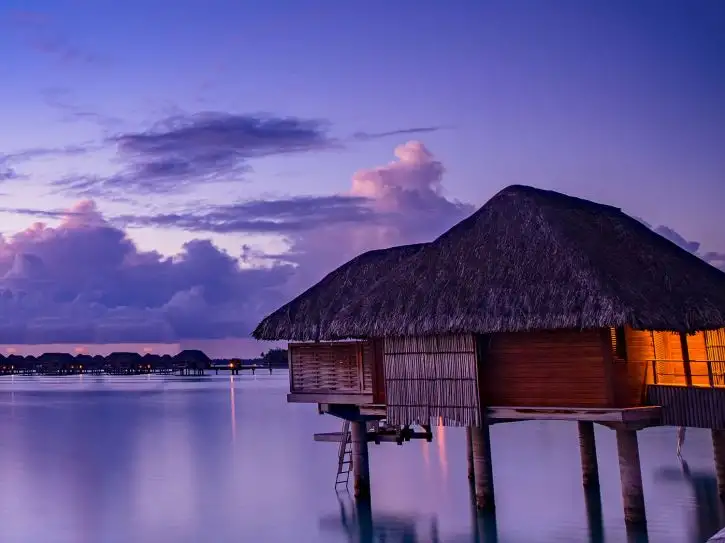
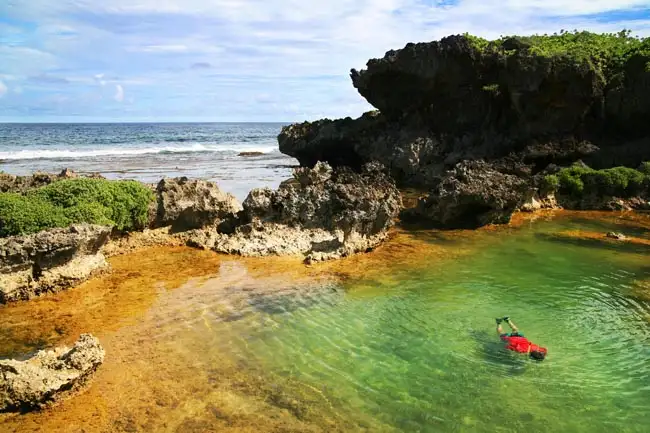
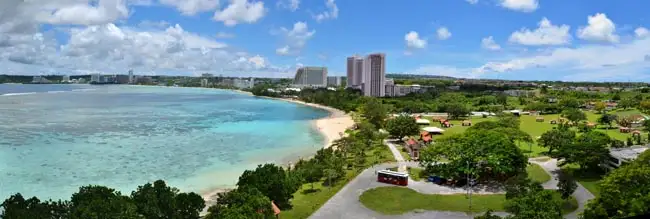
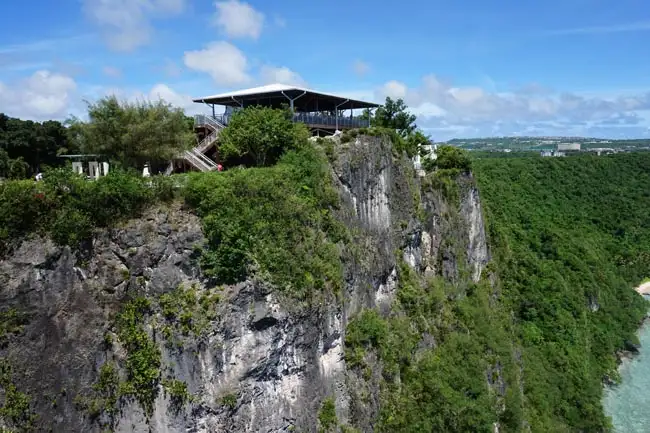
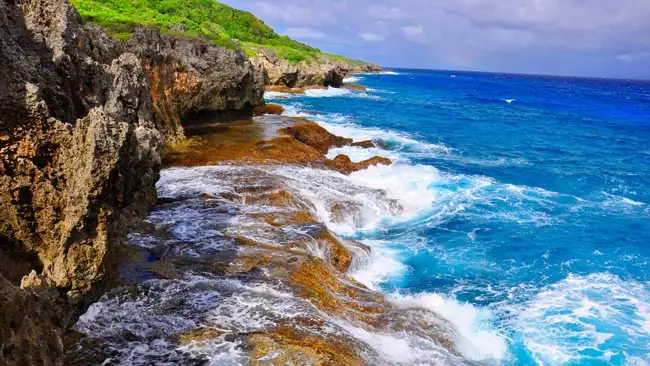
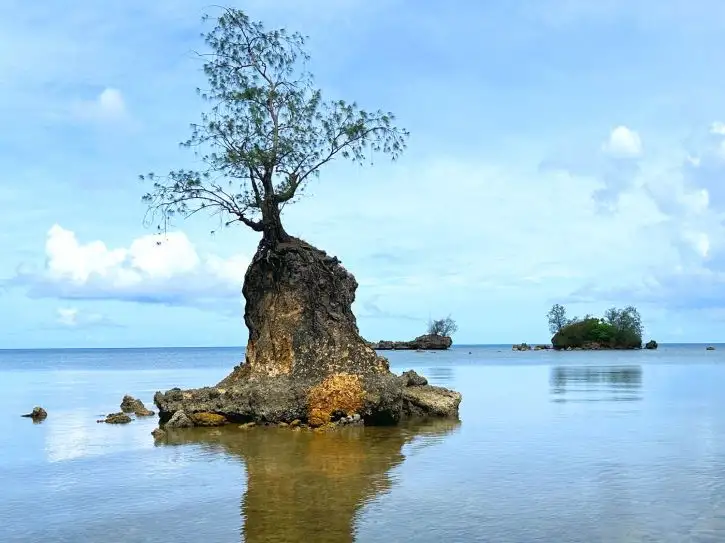
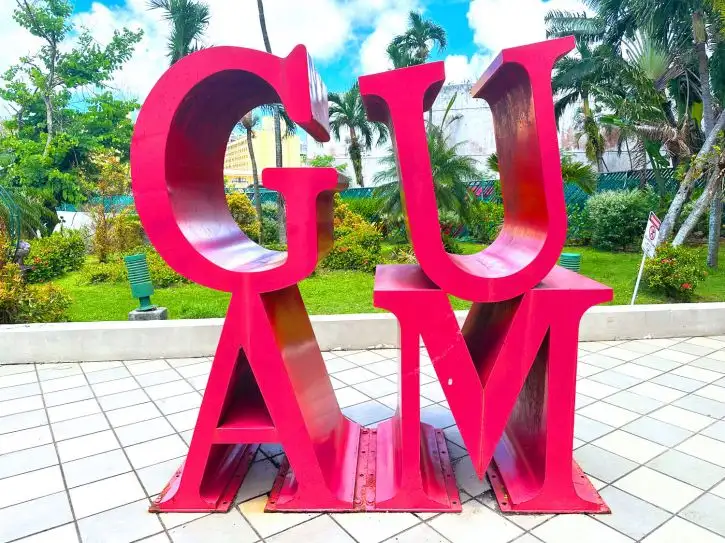
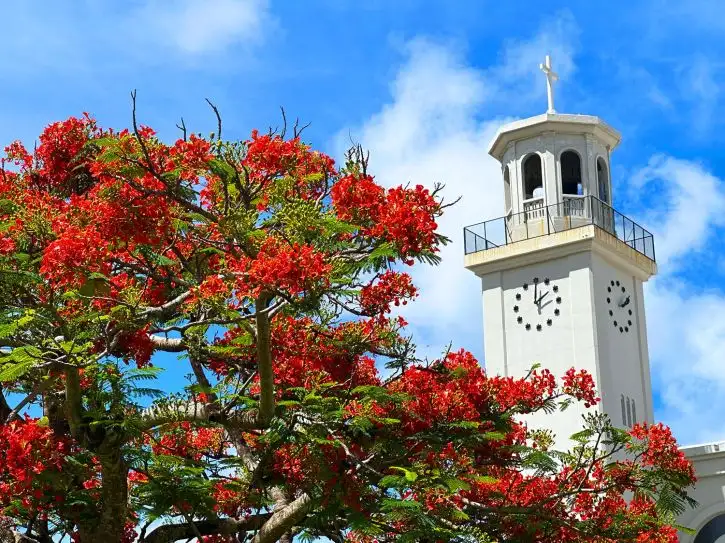
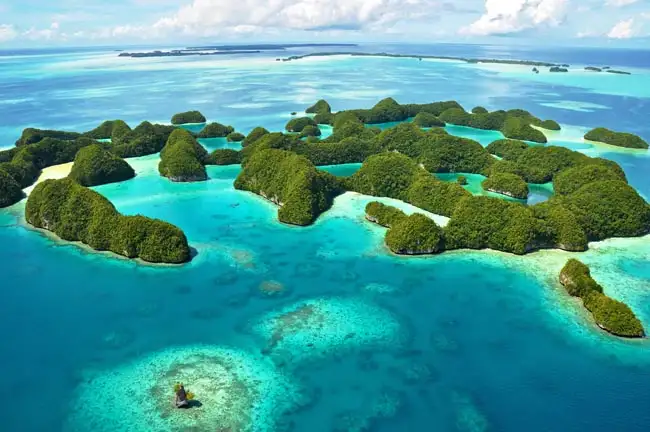
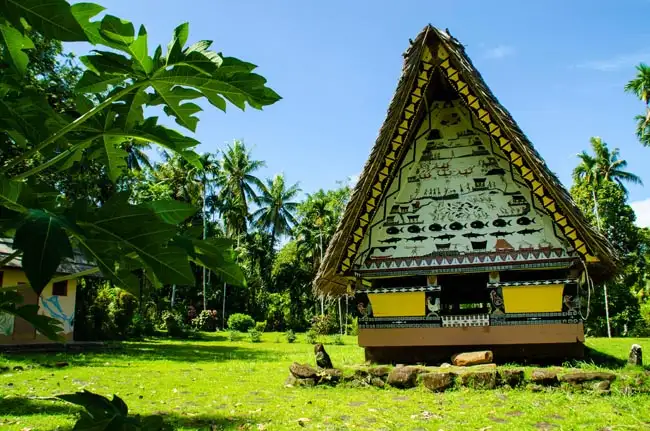
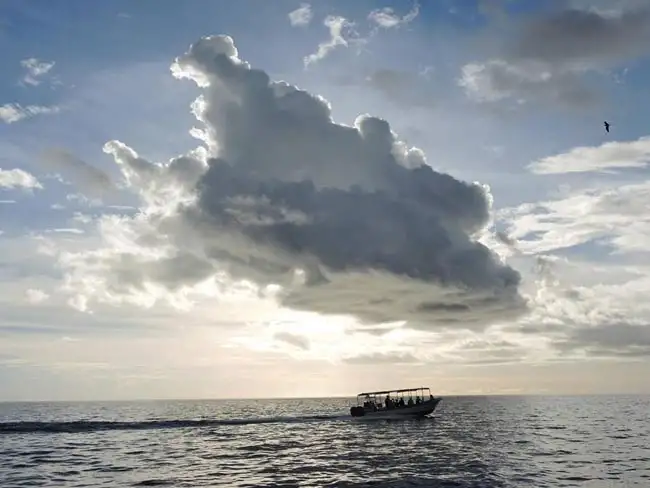
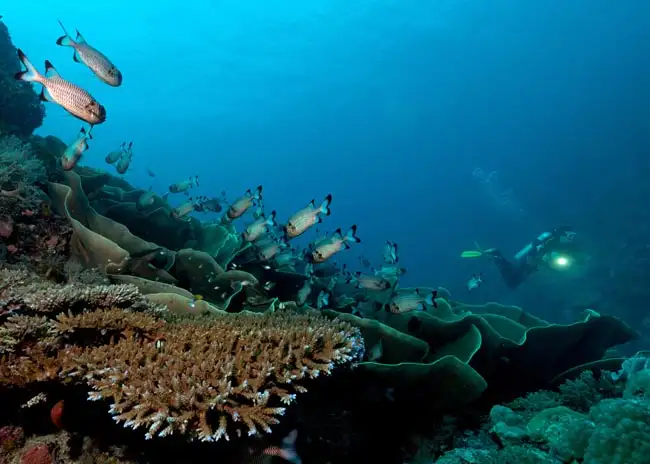
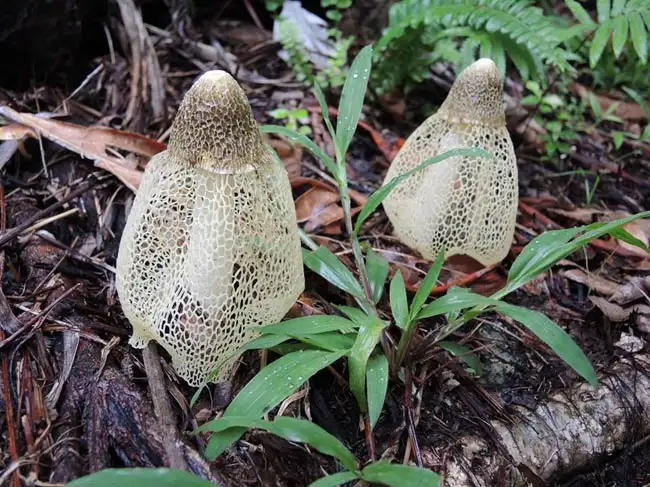
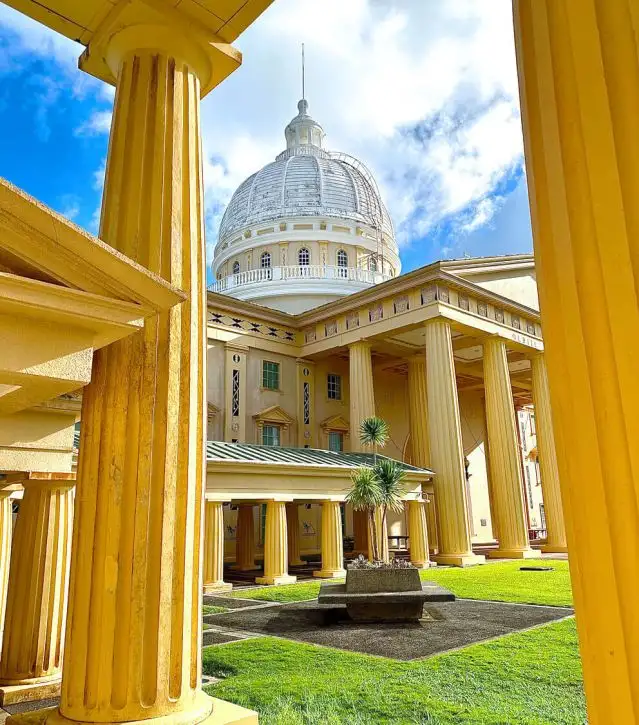
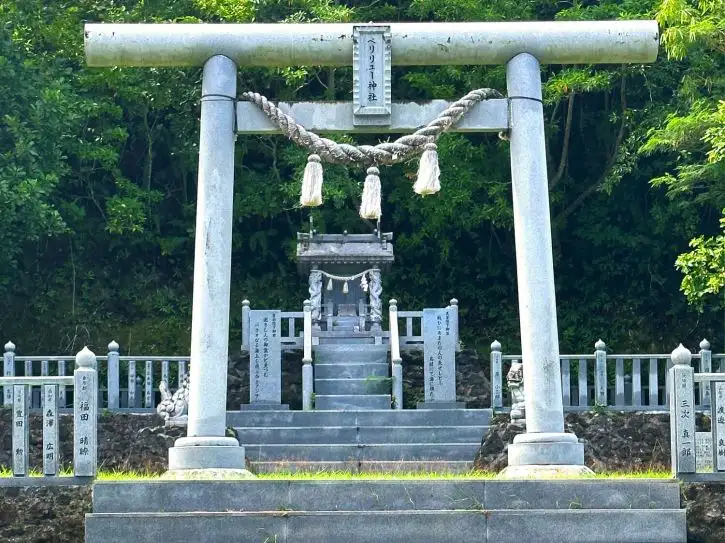

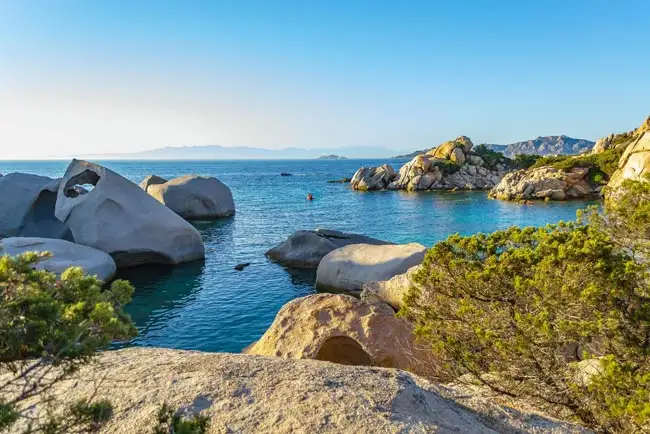
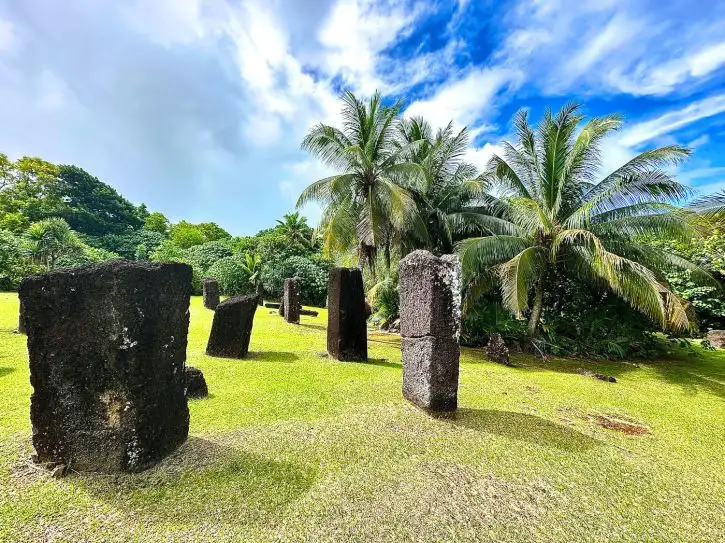
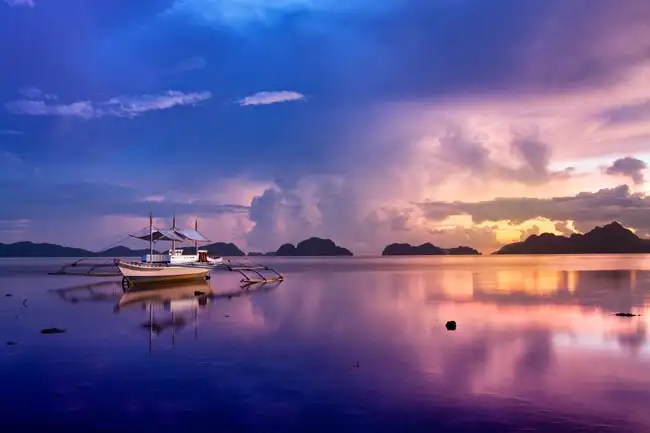
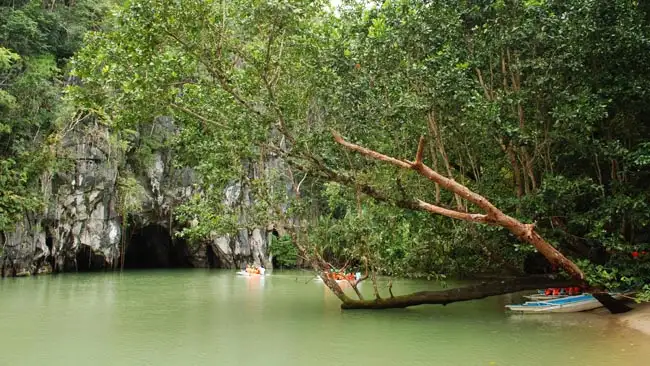
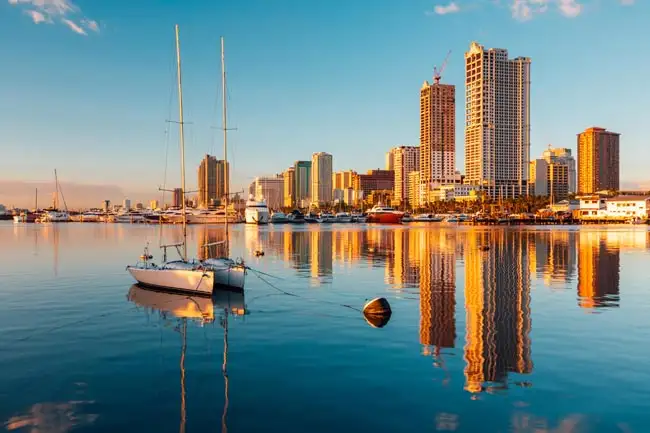
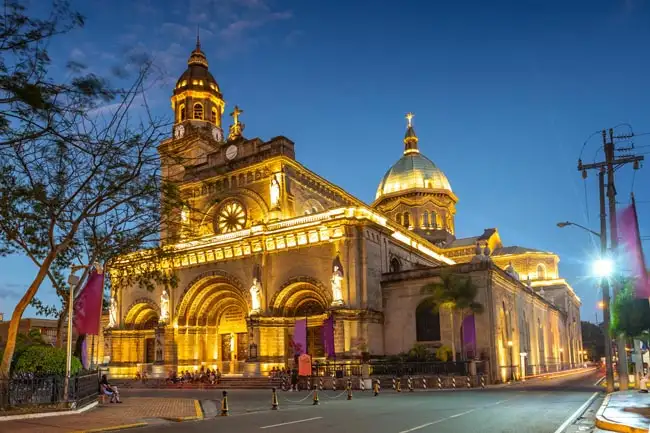
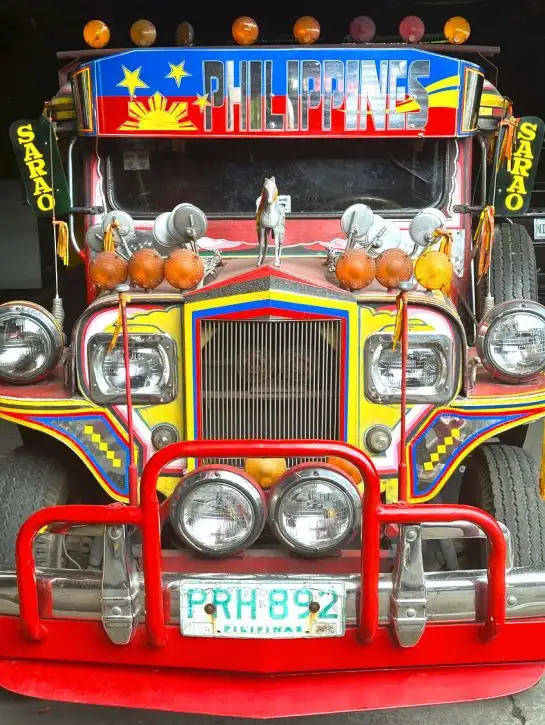
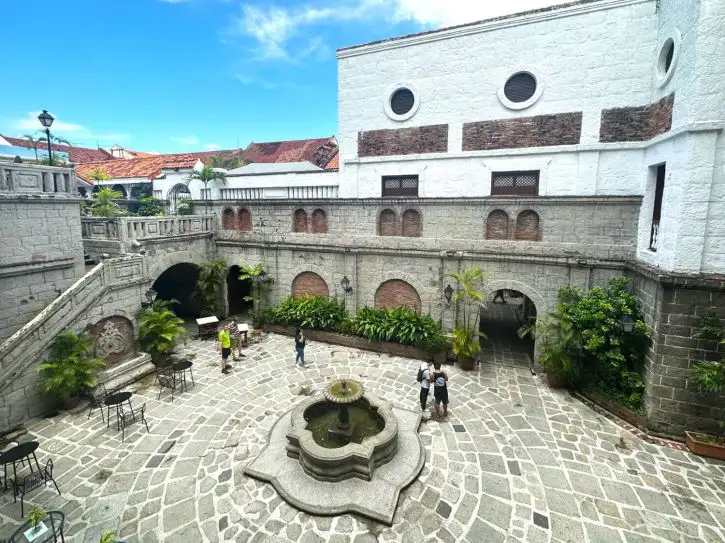
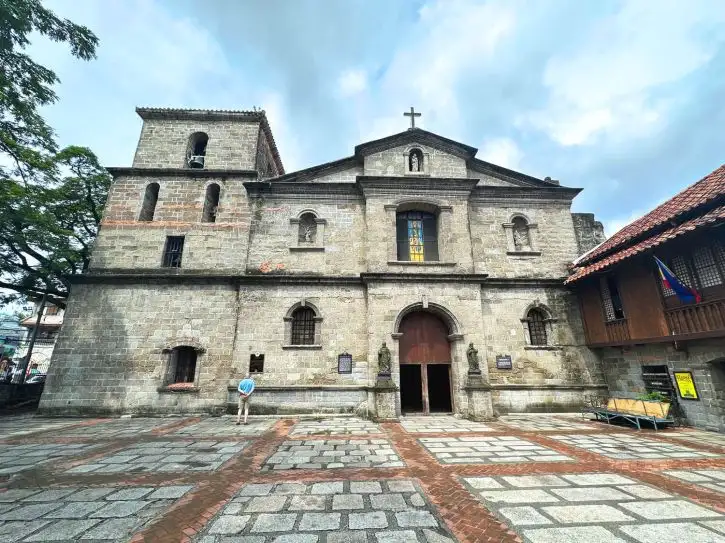
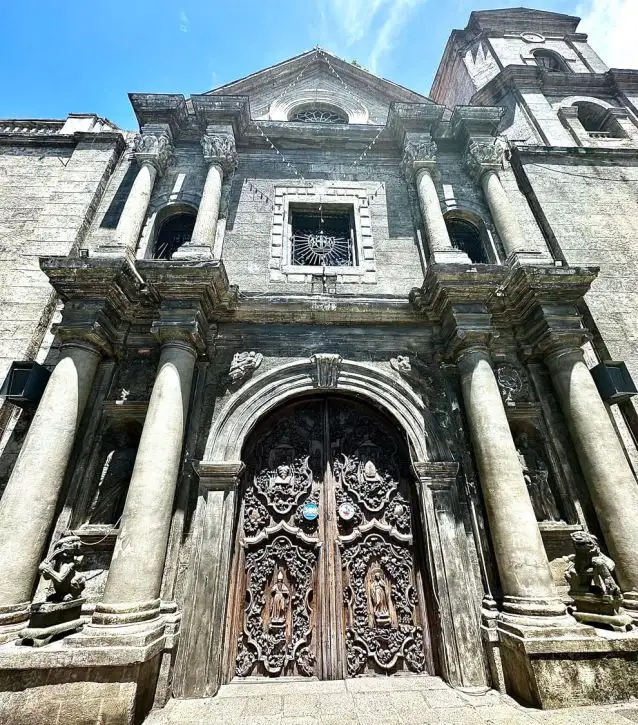
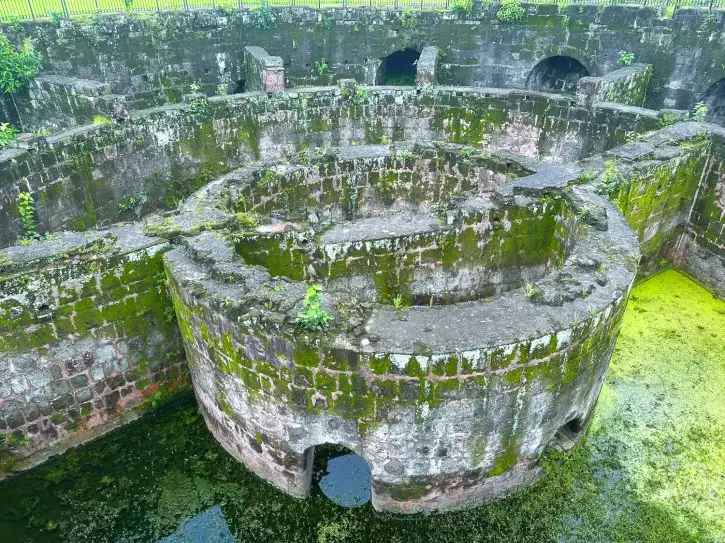
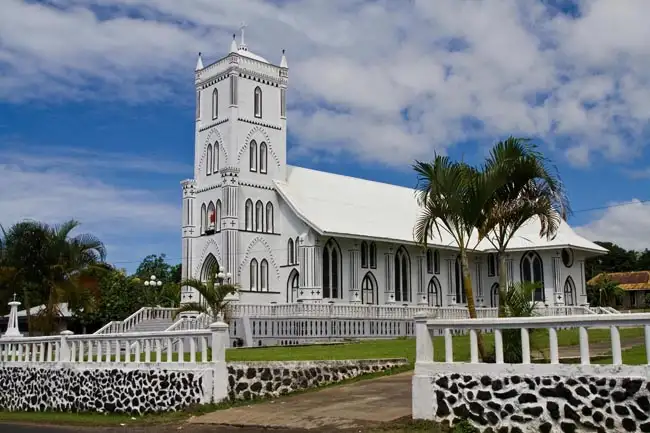
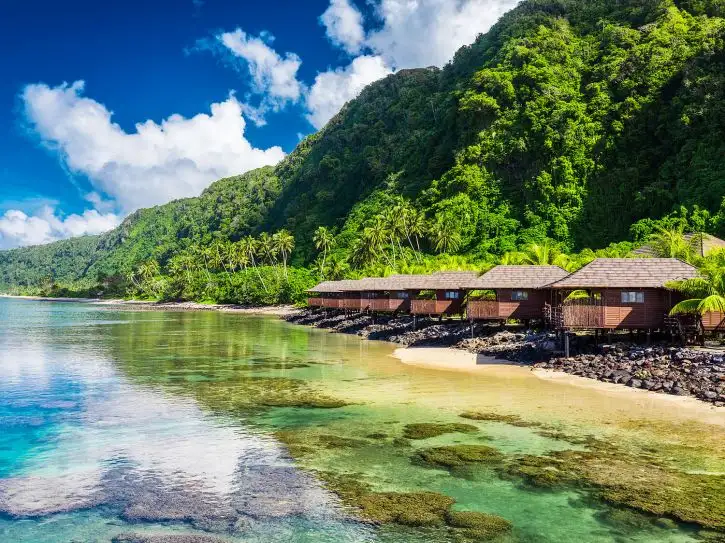
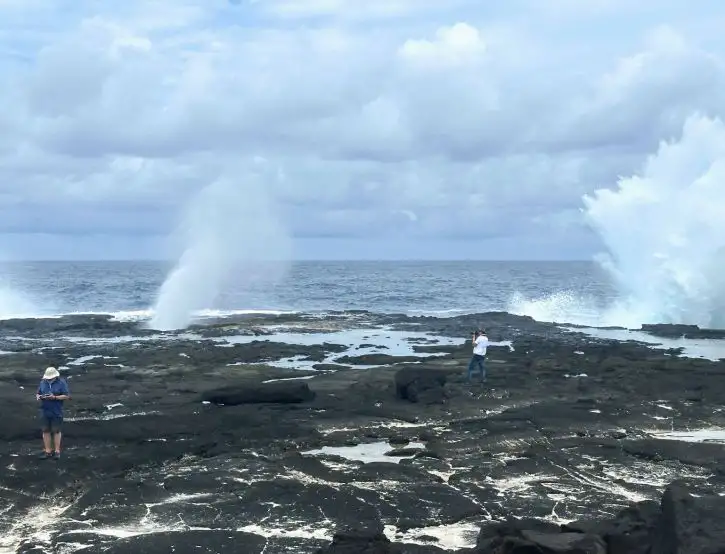
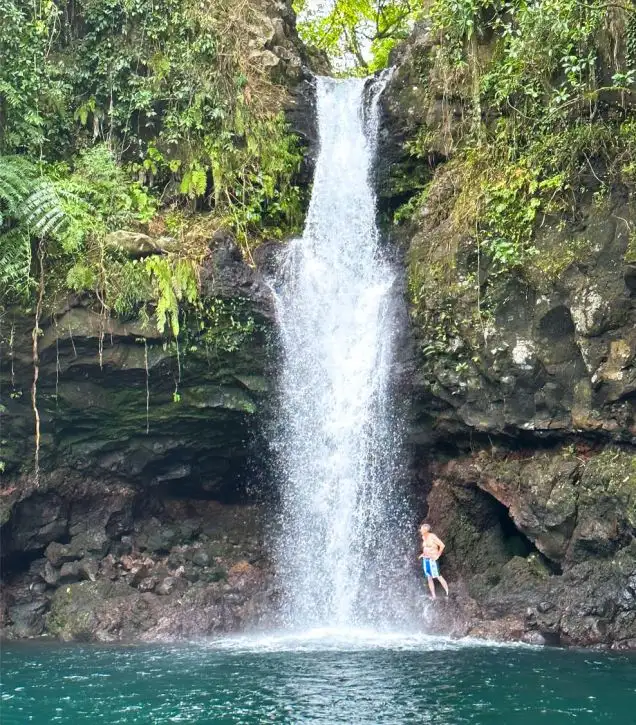
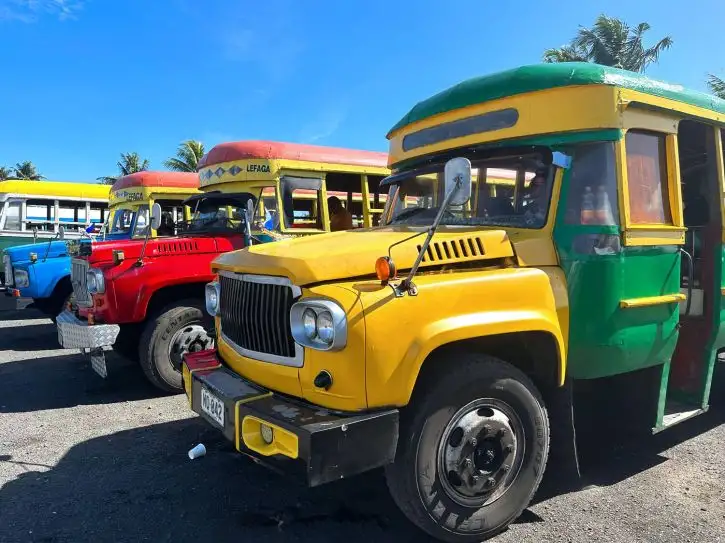
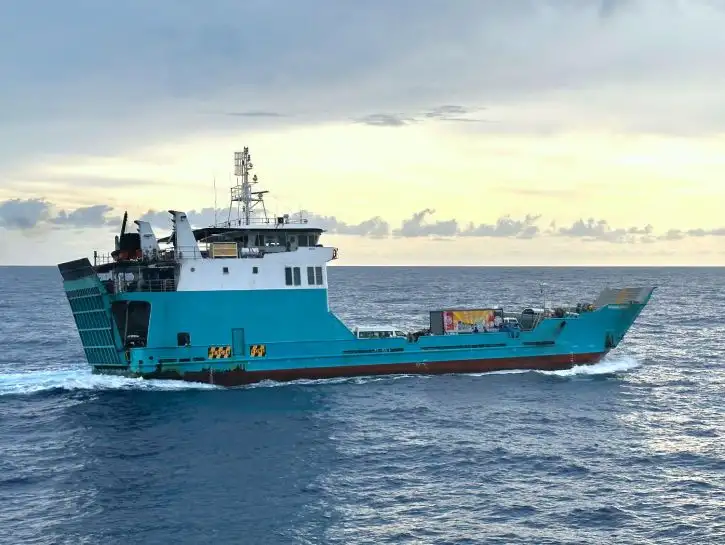
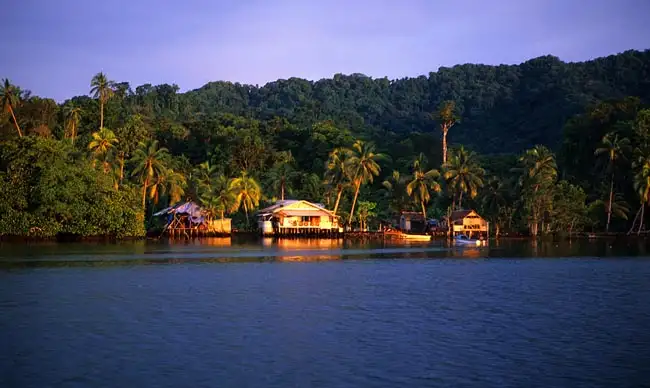
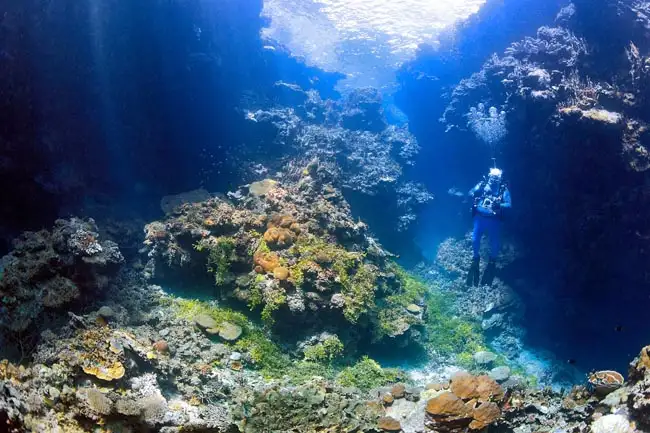

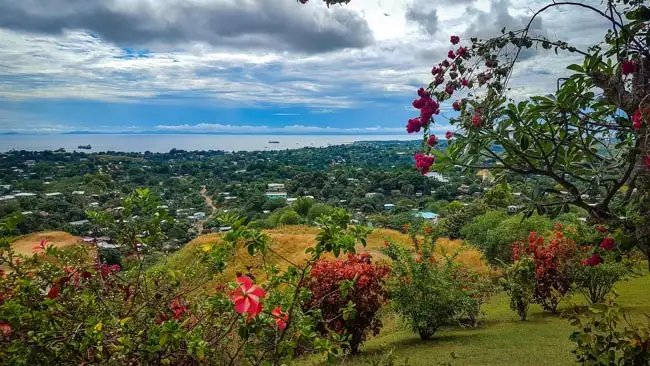
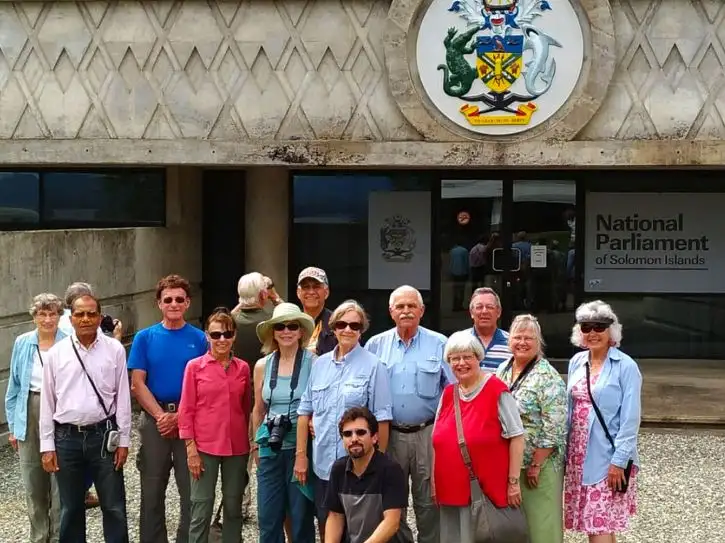
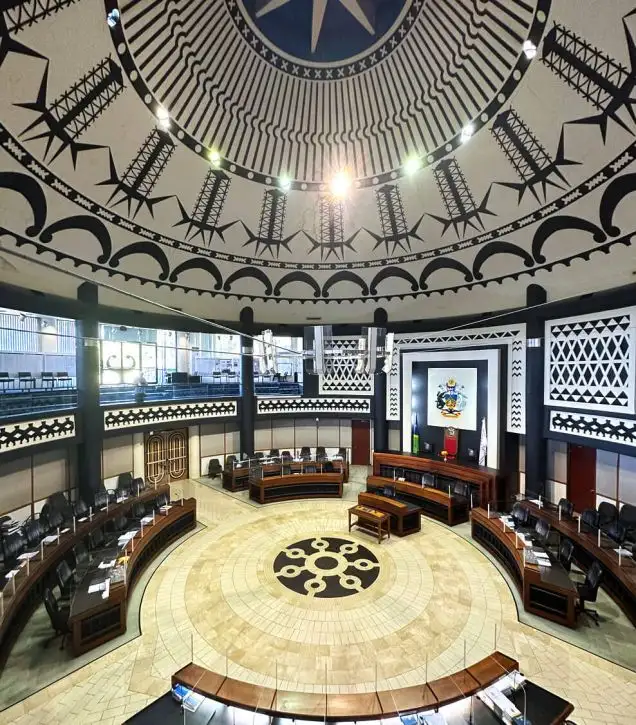
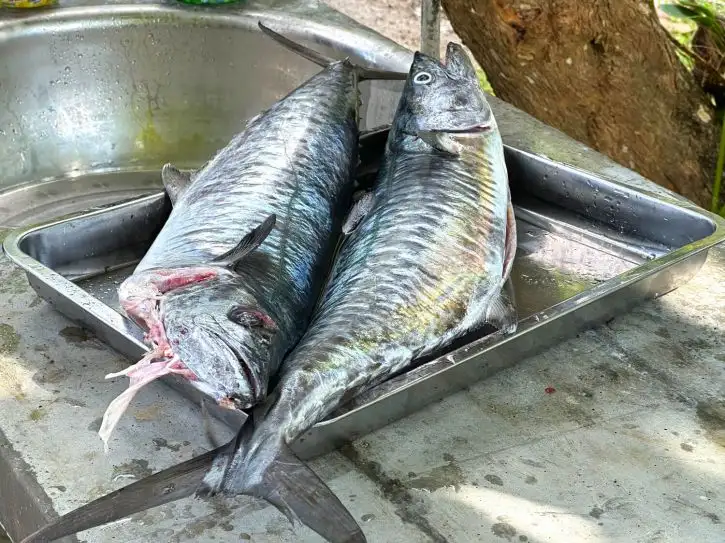
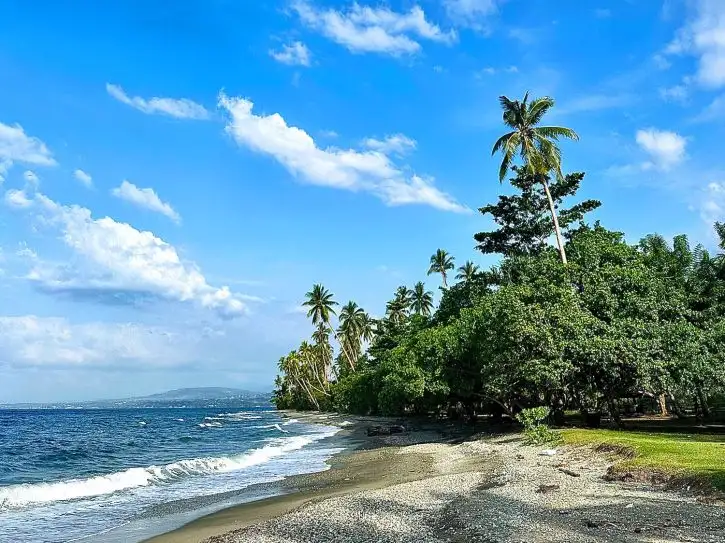
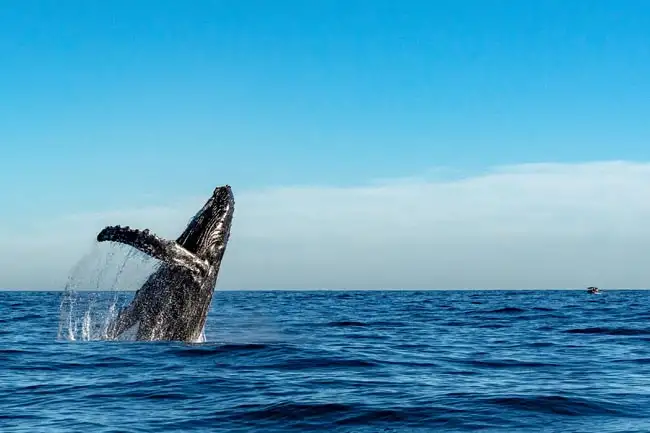
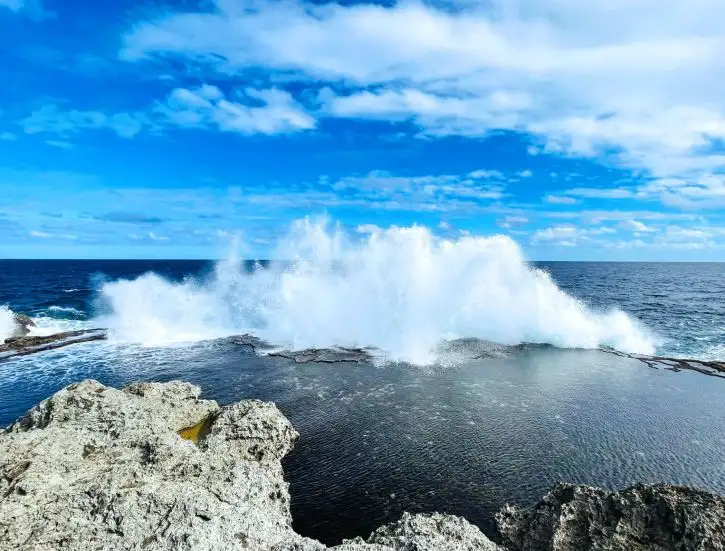
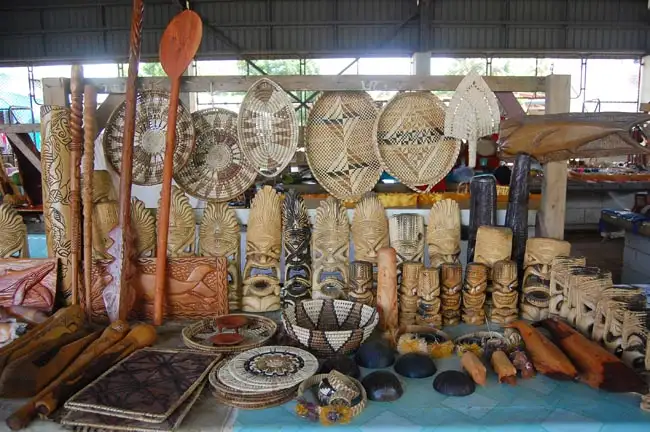
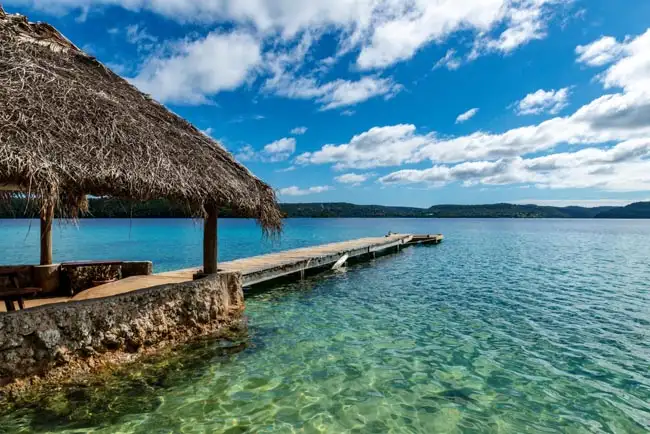
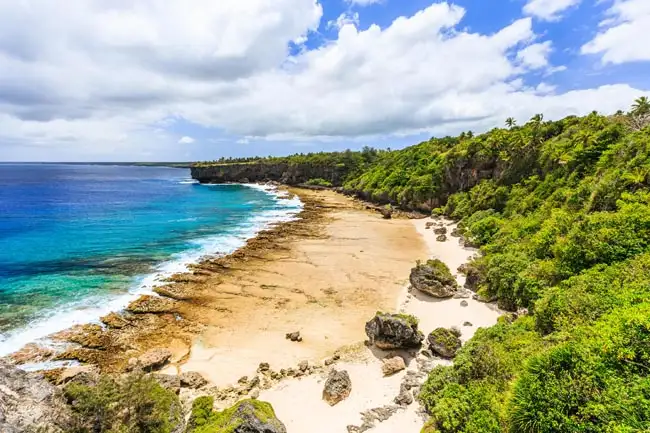


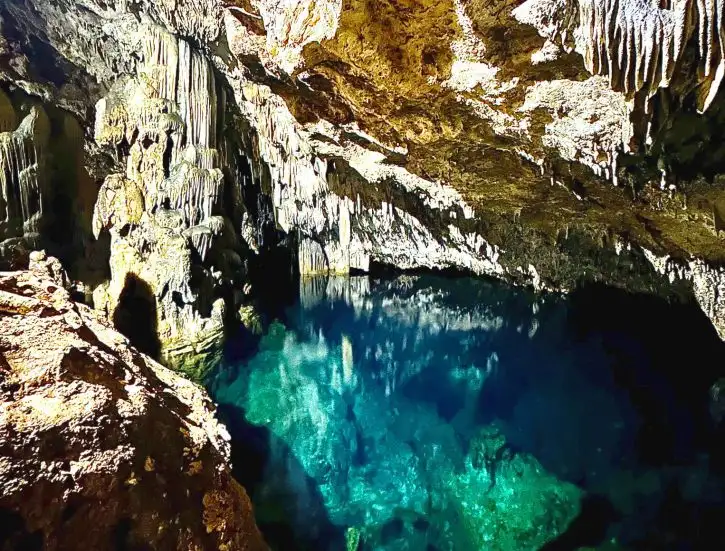
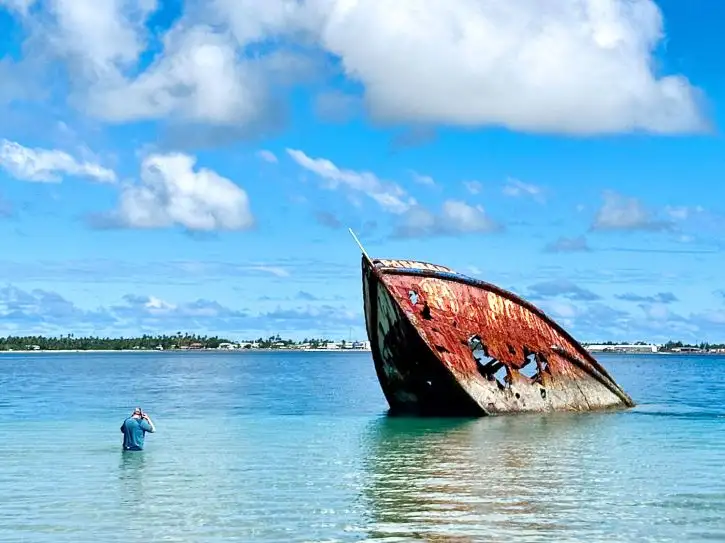
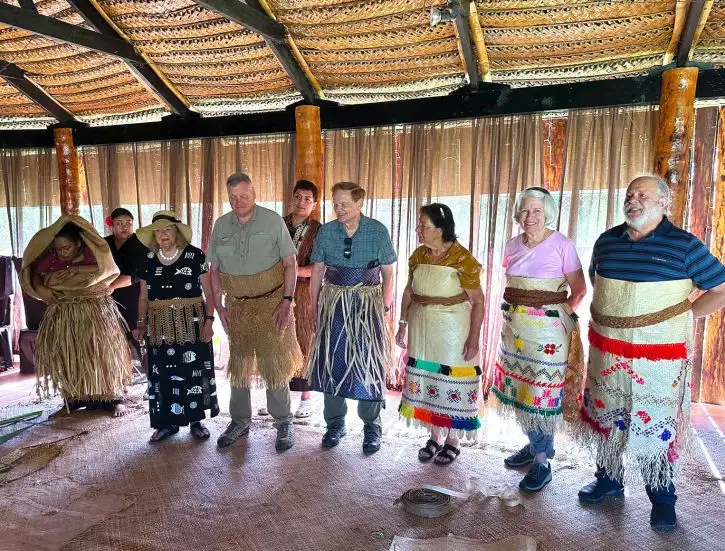
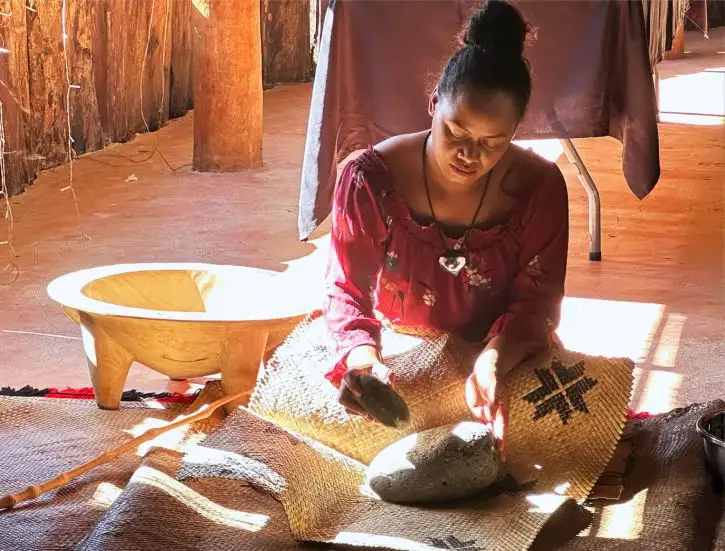
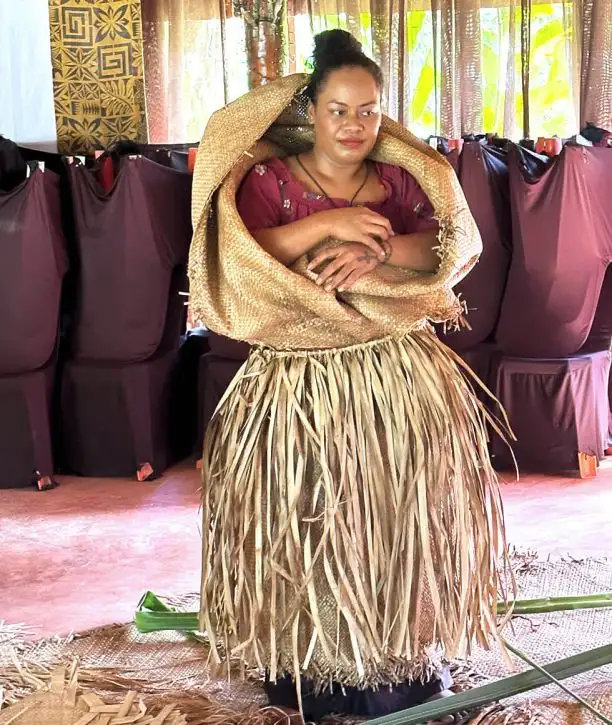
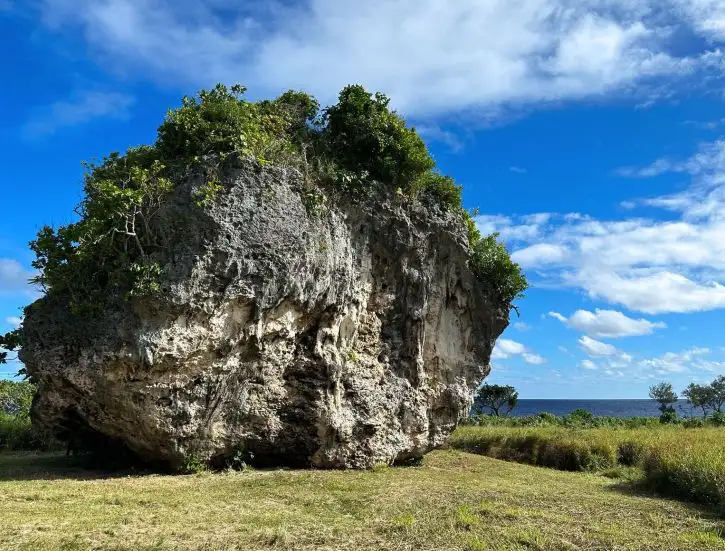
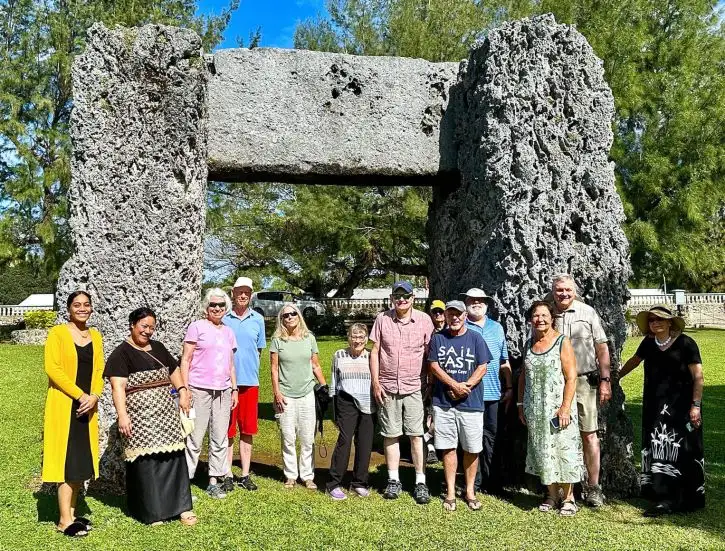
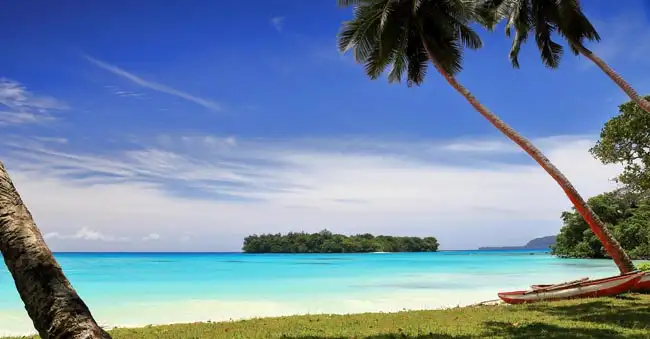
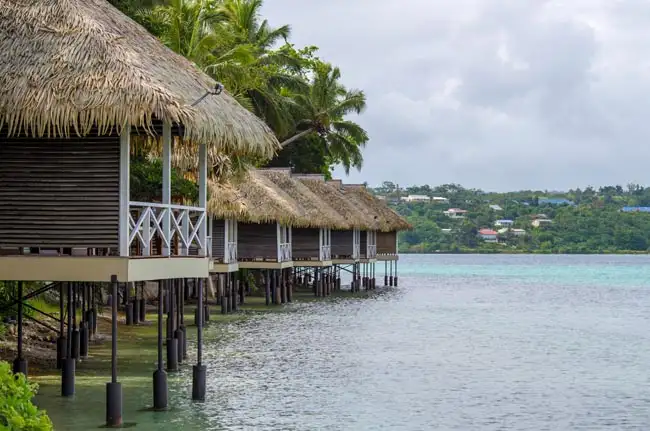
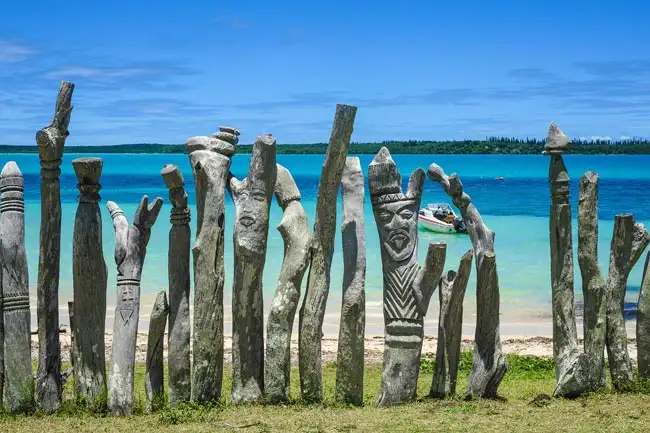

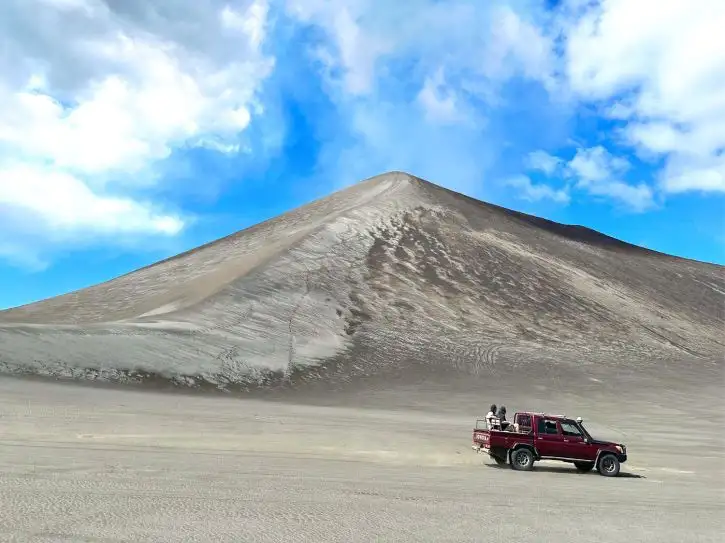
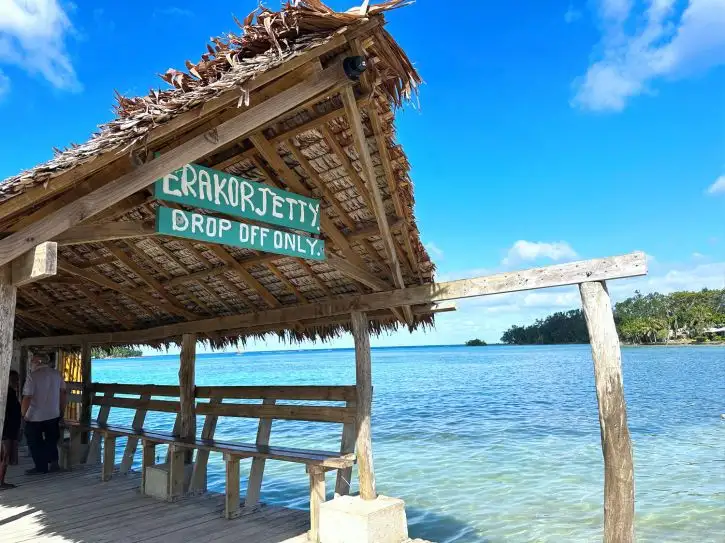
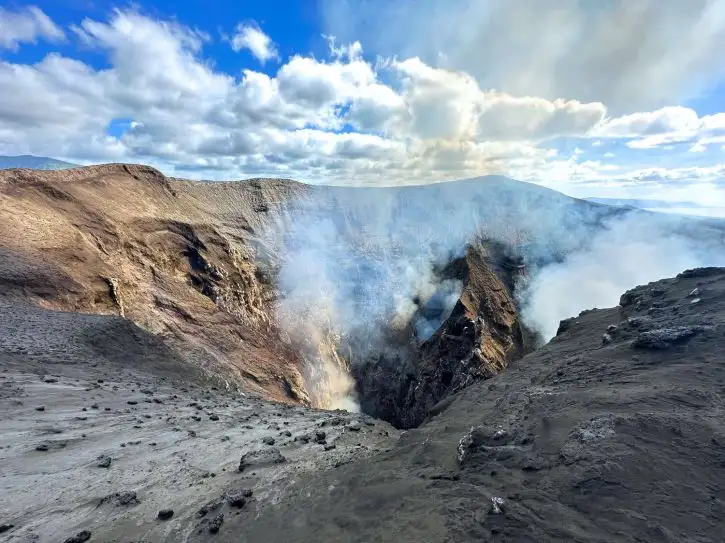
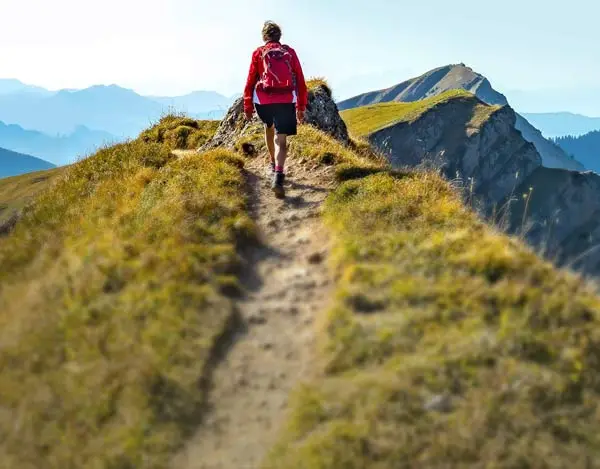
Book This Tour
- Final payment: Due 90 days prior to departure.
- Deposit: A non-refundable $1000 CAD Deposit is required at booking.
- Internal Flight Taxes: An extra $1239 CAD applies for taxes and fees on tour flights. The internal airfares are included, but taxes are listed separately as they may change. Exceptions are noted in Red.
- Optional Single Supplement: $4460 CAD (number of singles limited).
(View options forsingle travellers) - Please Note: Price includes ALL internal flights exclusive of taxes. Upon 'guarantee,' we will require an additional pre-payment of $2000 per person to cover the internal flights included on the tour. Once paid this amount becomes 100% non-refundable & non-transferrable.
Prices below are per person, twin-sharing costs in Canadian Dollars (CAD). Pricing does not include airfare to/from the tour and any applicable taxes.
Tourcode: MCSP
Frequently Asked Questions
- What is the maximum number of participants on a trip?Most of our tours carry a maximum of 18 participants; some tours (ie hiking tours) top out at 16. In the event that we do not achieve our minimum complement by our 90-day deadline, we may offer group members the option of paying a "small-group surcharge" as an alternative to cancellation. If all group members agree, we will confirm the trip at existing numbers; this surcharge is refundable in the event that we ultimately achieve our regular minimum. If the small group surcharge is not accepted, we will offer a refund of your deposit or a different trip of your choice.
- Can I extend my tour either at the beginning or end? What about stopovers?Yes, you can extend your tour either at the beginning or the end and we can book accommodation in our tour hotel. Stopovers are often permitted, depending on air routing. Stopovers usually carry a "stopover" fee levied by the airline.
- How do I make a reservation? How and when do I pay?The easiest way to make a reservation is via our website; during office hours, you are also more than welcome to contact us by telephone.
A non-refundable deposit is payable at the time of booking; if a reservation is made within 90 days, full payment is required. Some trips require a larger deposit. If international airline bookings require a non-refundable payment in order to secure space or the lowest available fare, we will require an increase in deposit equal to the cost of the ticket(s).
Early enrolment is always encouraged as group size is limited and some trips require greater preparation time.
Once we have received your deposit, we will confirm your space and send you a confirmation package containing your trip itinerary, any visa/travel permit related documents, invoice, clothing and equipment recommendations, general information on your destination(s), and forms for you to complete, sign and return to us. Your air e-tickets (if applicable), final hotel list, final trip itinerary, and instructions on how to join your tour, will be sent approximately 2-3 weeks prior to departure. - What about cancellations, refunds, and transfers?Please review our cancellation policy page for details.
- I am a single who prefers my own room. What is a single supplement?All of our tours have a single supplement for those who want to be guaranteed their own room at each location.
This supplement is a reflection of the fact that most hotels around the world do not discount the regular twin-share rate for a room by 50% for only one person occupying a room. Most hotels will give a break on the price, but usually in the range of 25-30% of the twin-share rate. This difference, multiplied by each night, amounts to the single supplement.
The conventional amount can also vary from country to country and some destinations are more expensive than others for single occupancy. In order to be "single friendly," the supplements we apply are not a profit centre for us and we do our best to keep them as reasonable as possible.
On most tours we limit the number of singles available, not to be punitive, but rather because many hotels allow for only a limited number of singles; some smaller hotels at remote locations also have a limited number of single rooms available.
Please note that most single rooms around the world are smaller than twin-share rooms and will likely have only one bed. - Do you have a shared accommodation program?Yes! If you are single traveller and are willing to share, we will do our best to pair you with a same-gender roommate. Please note that should we fail to pair you, we will absorb the single supplement fee and you will default to a single room at no extra charge.
